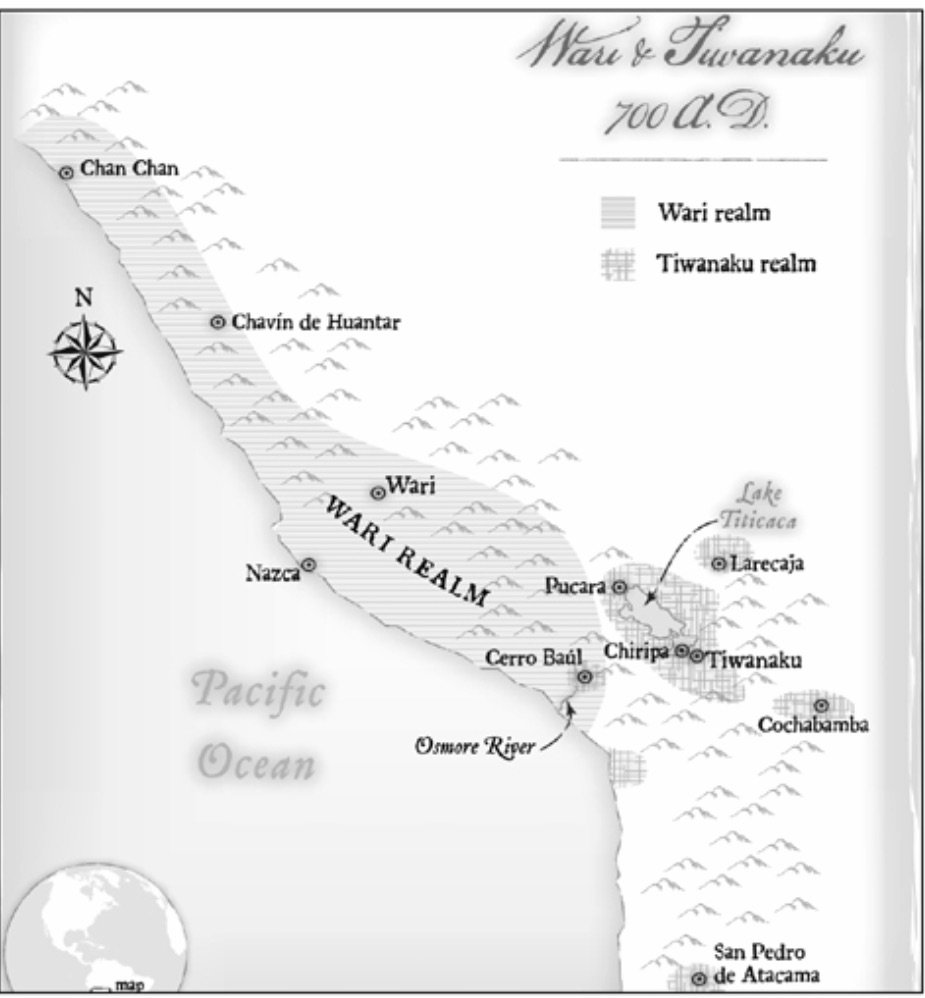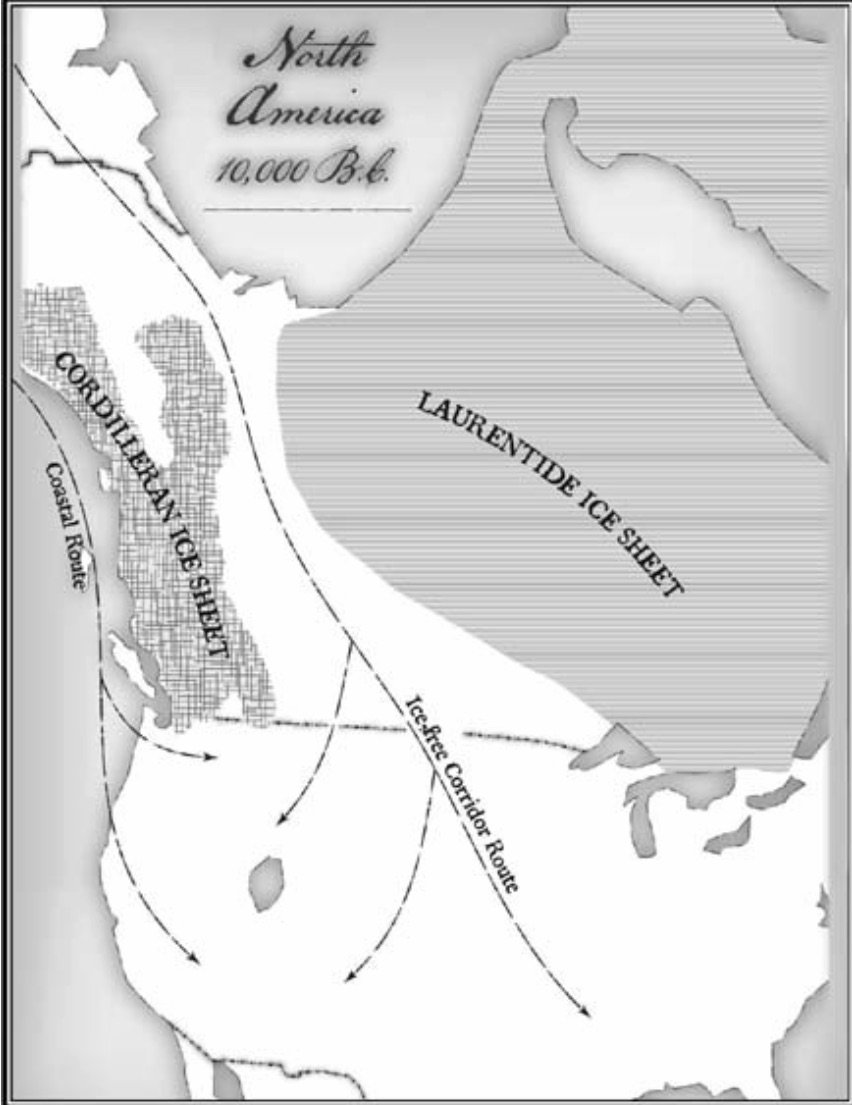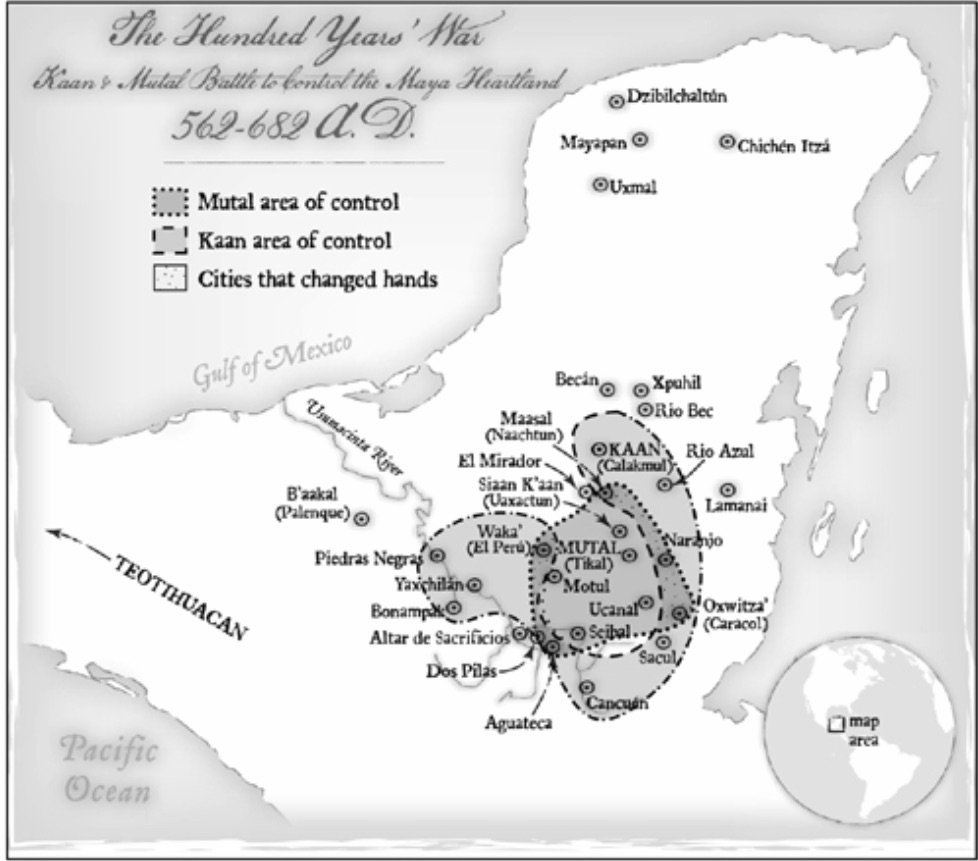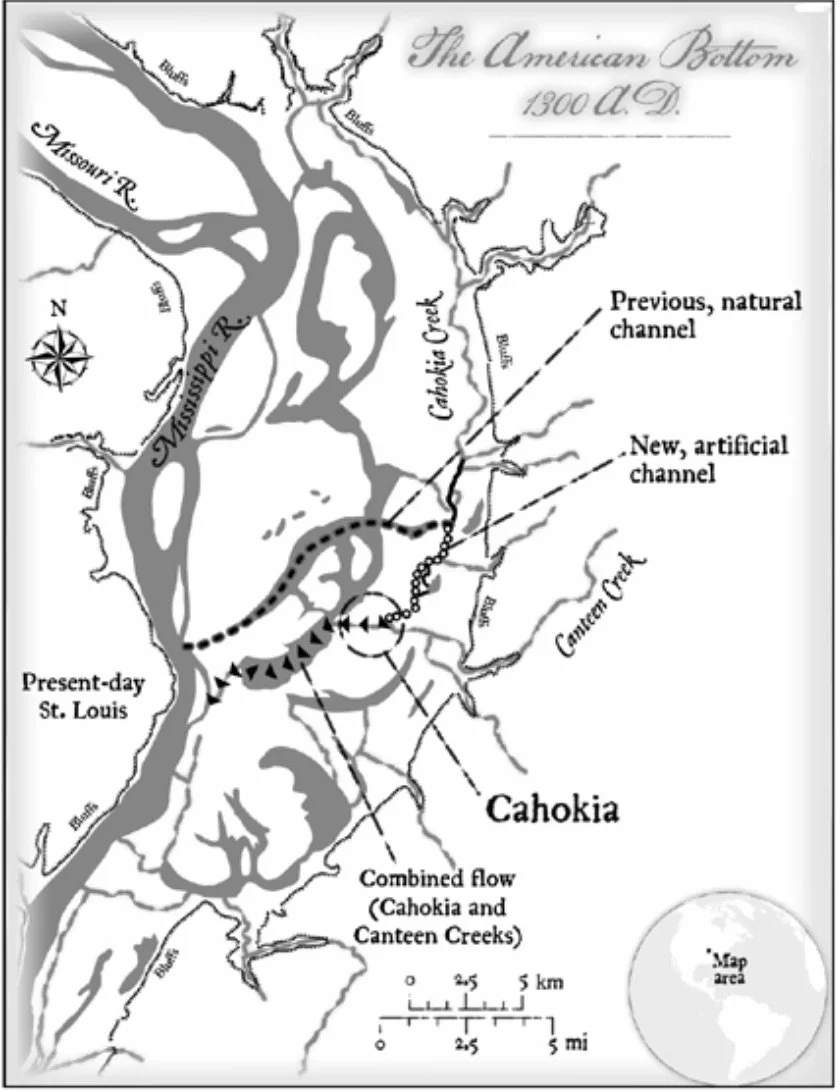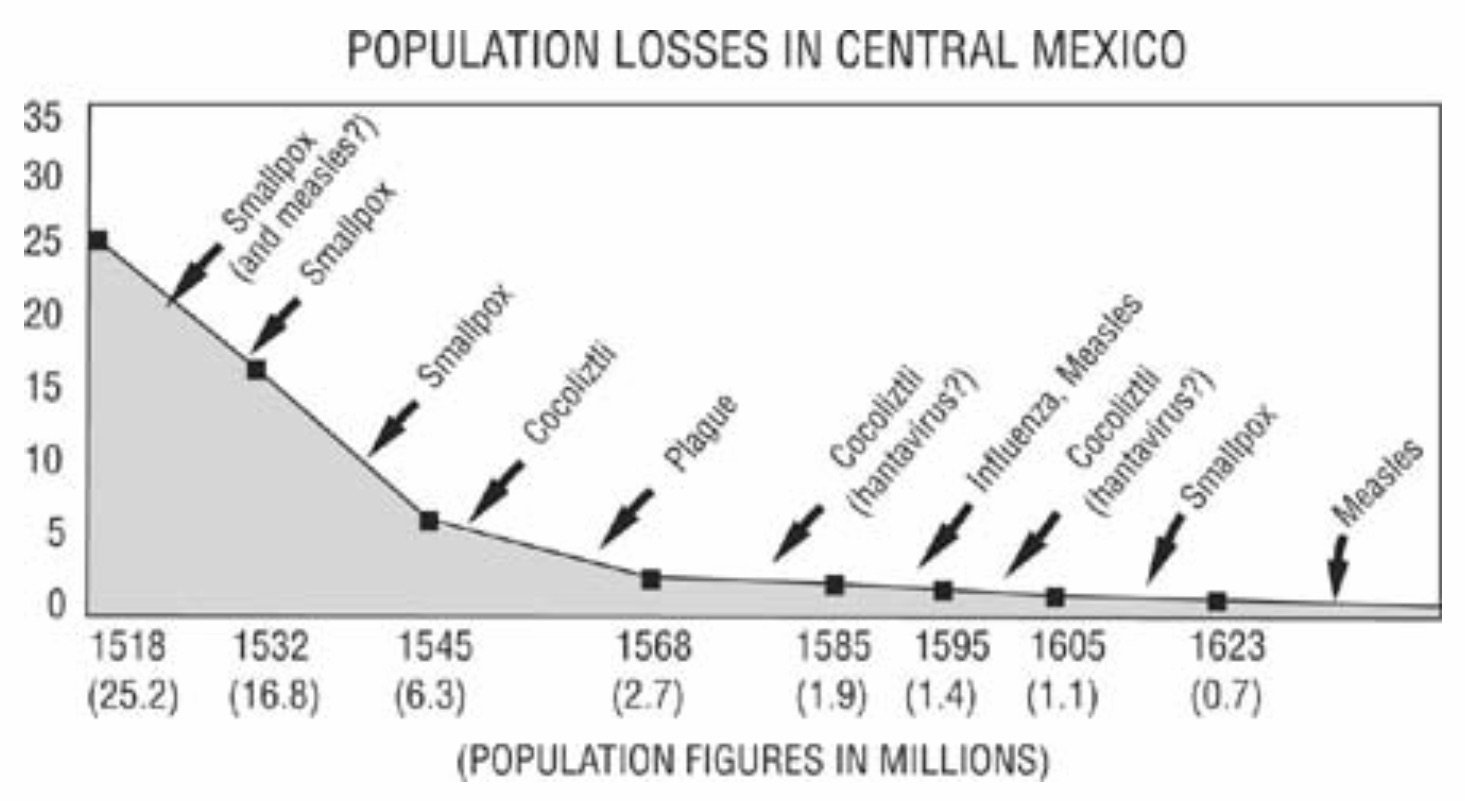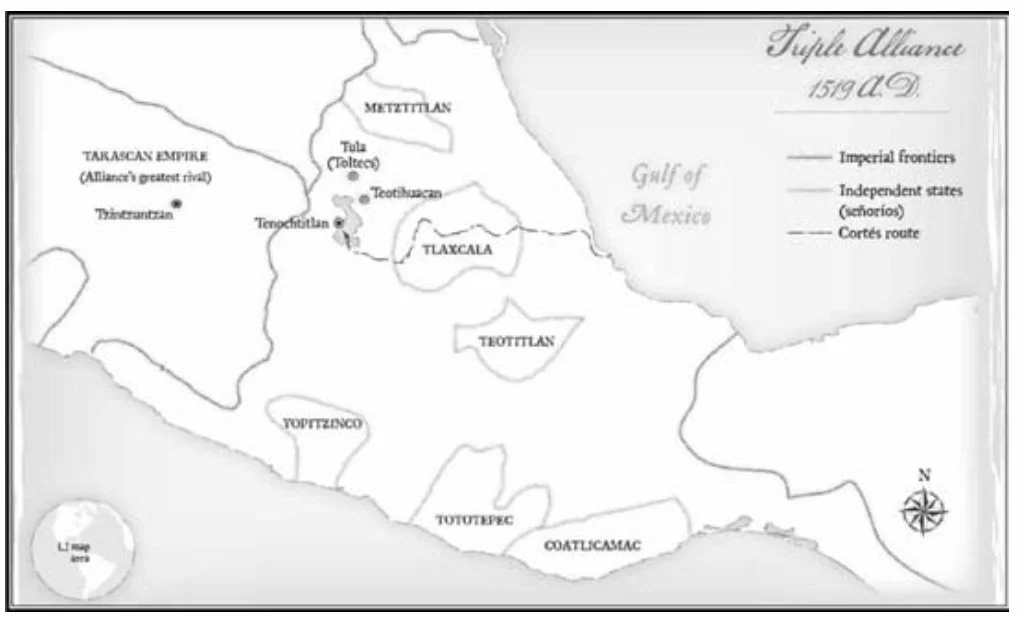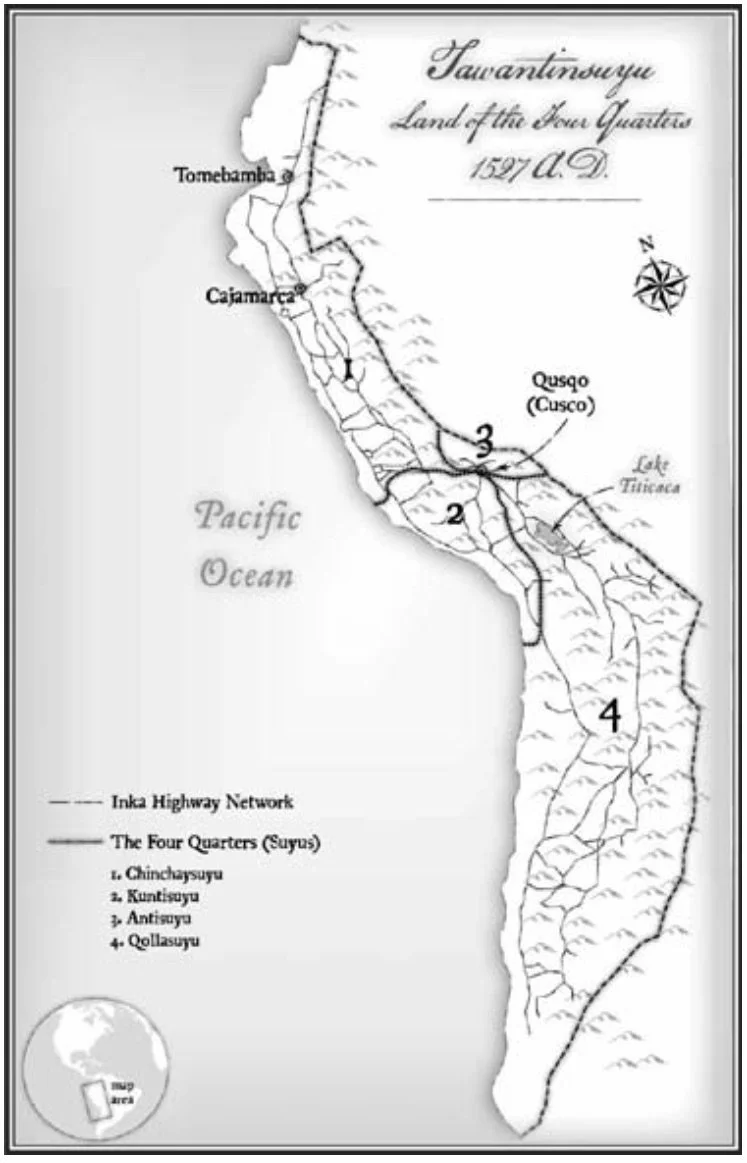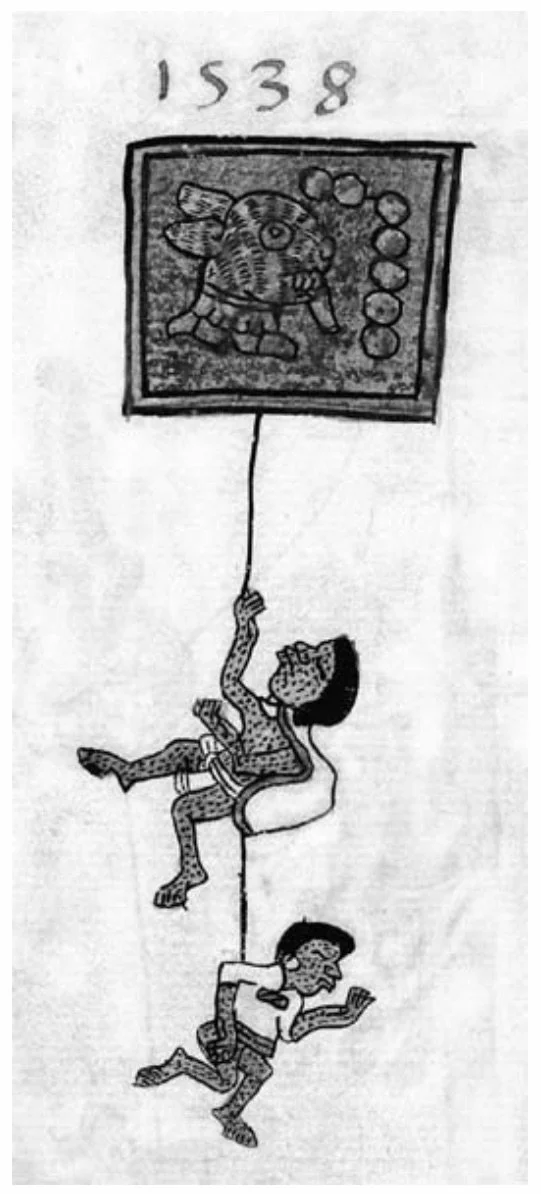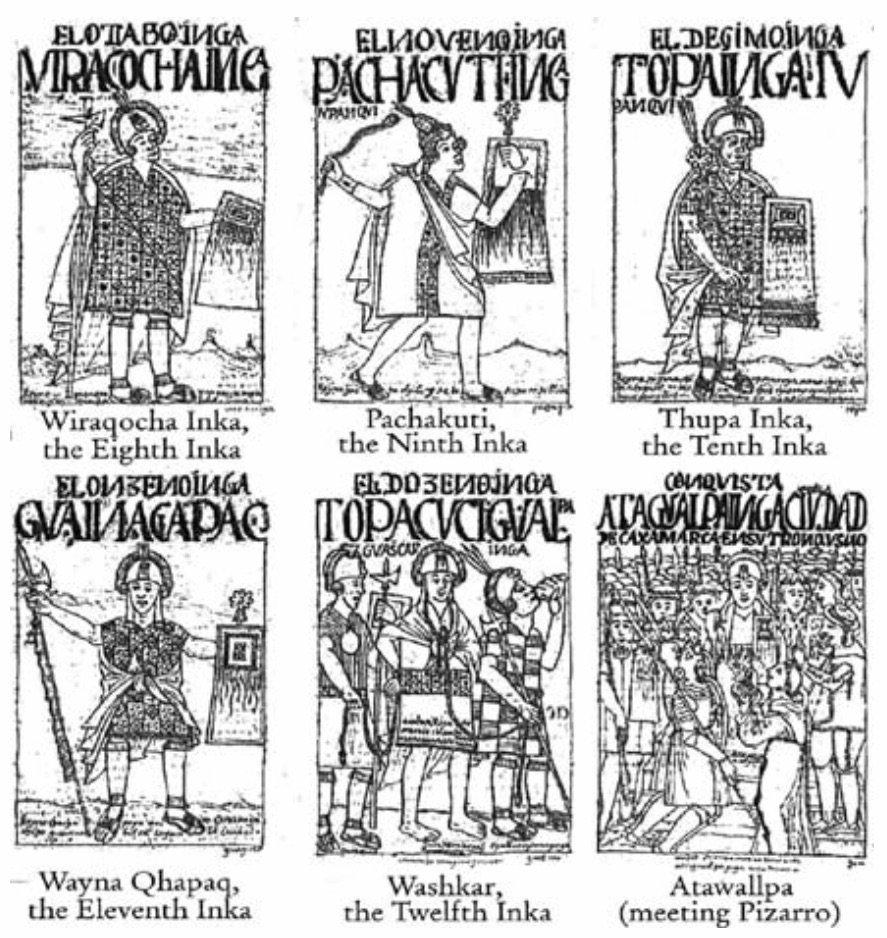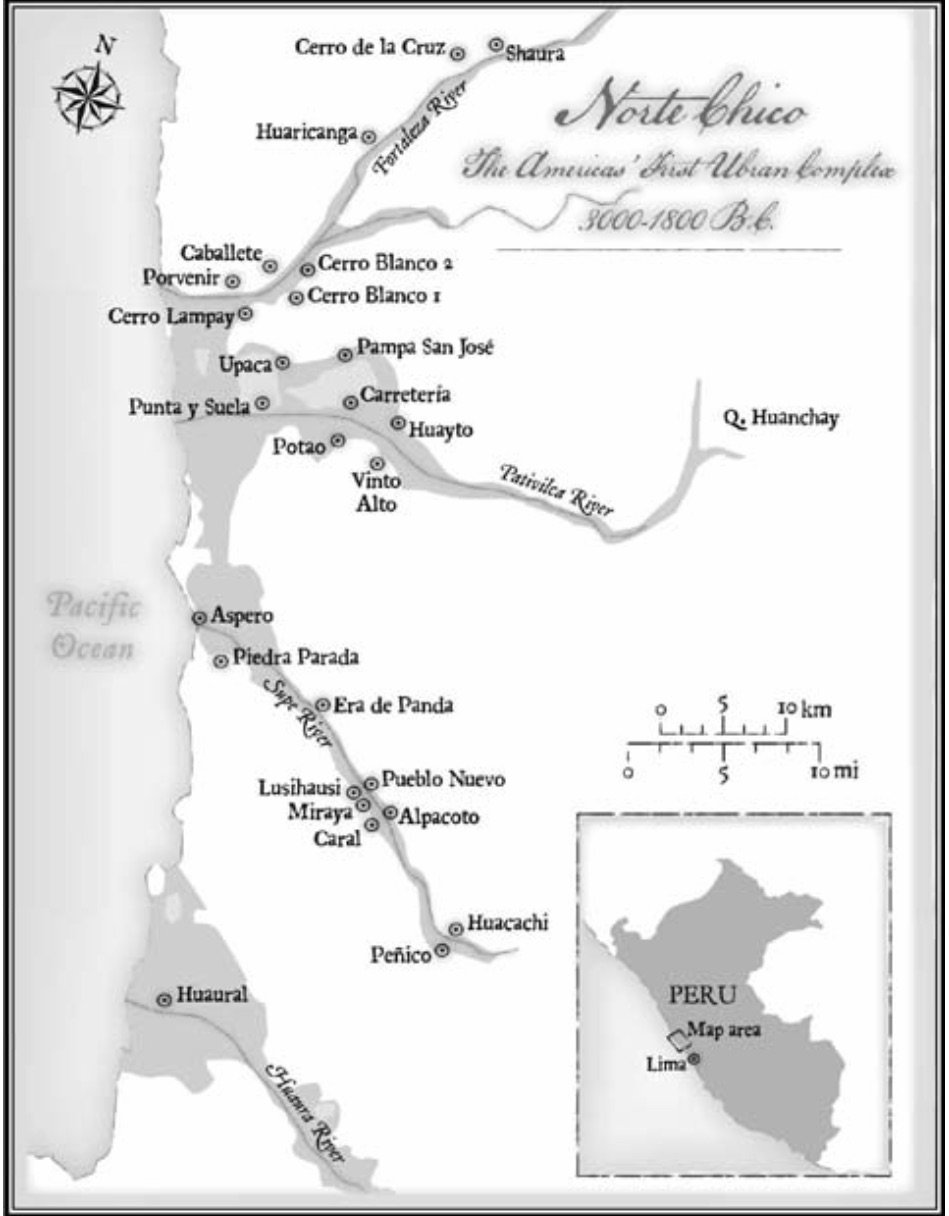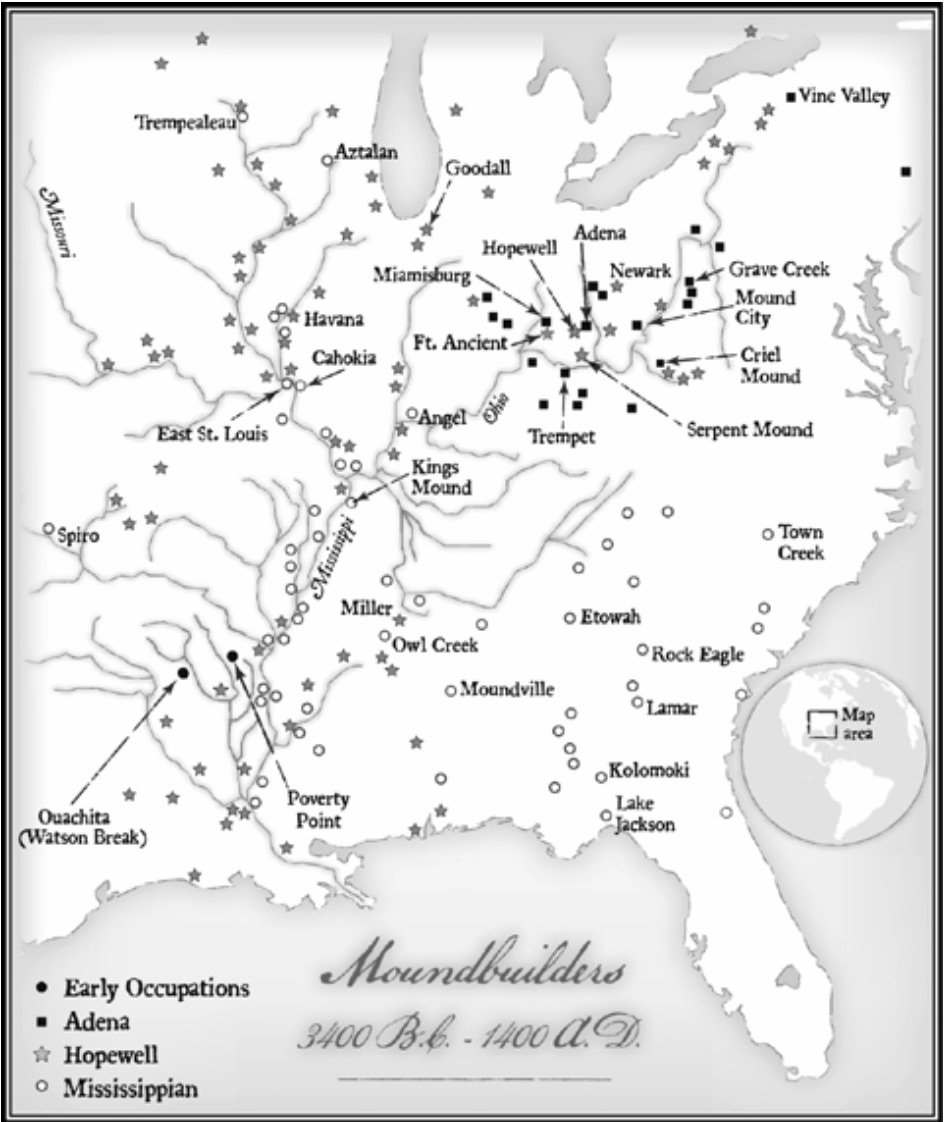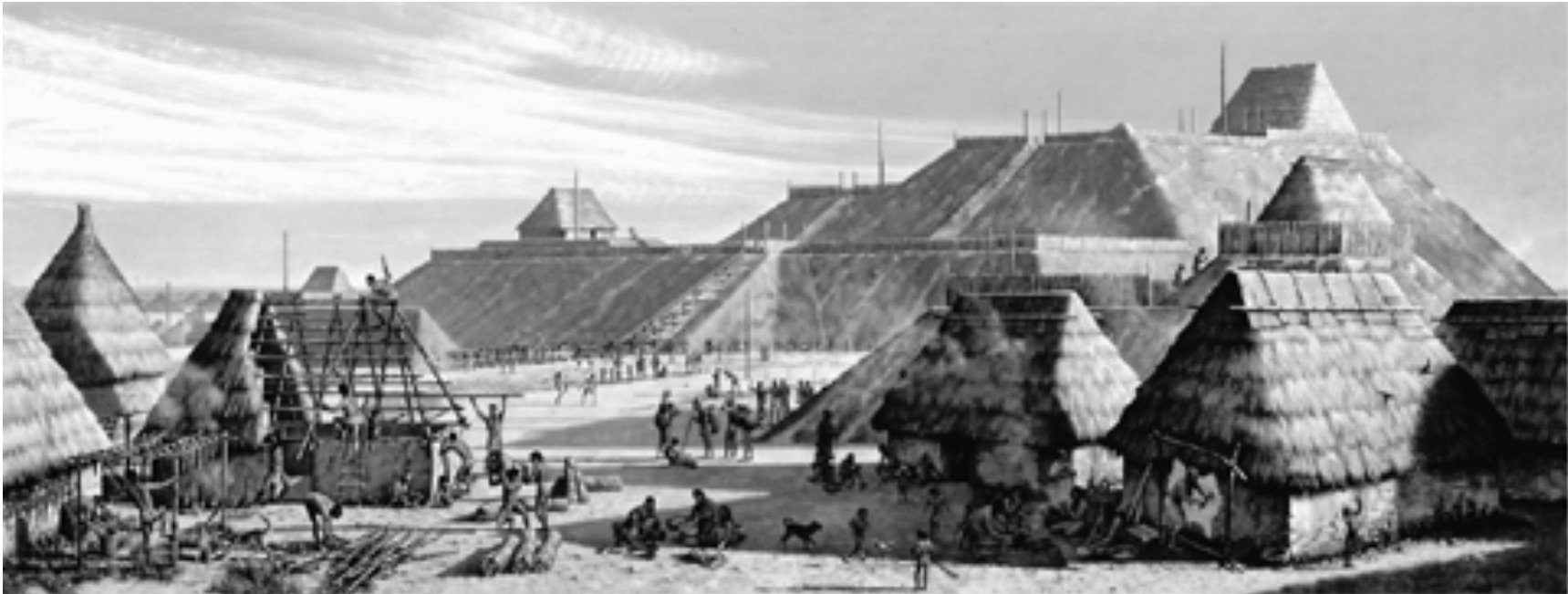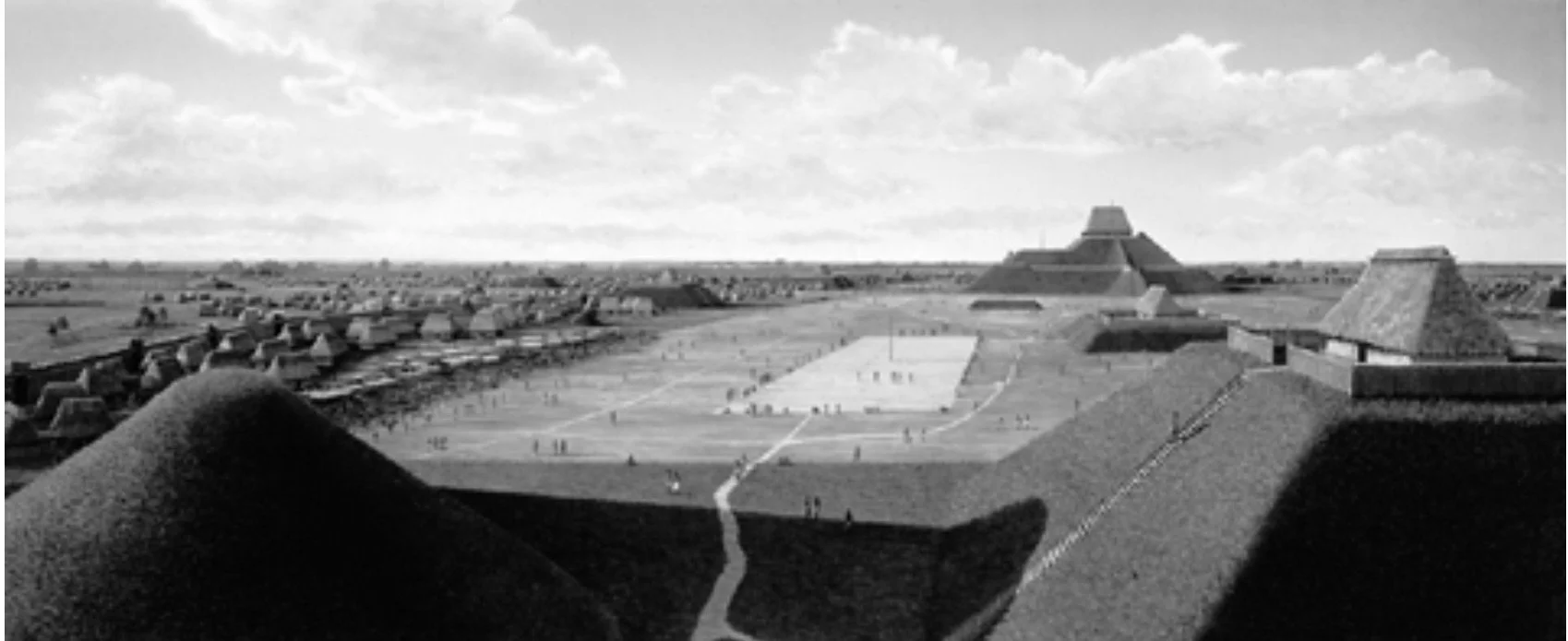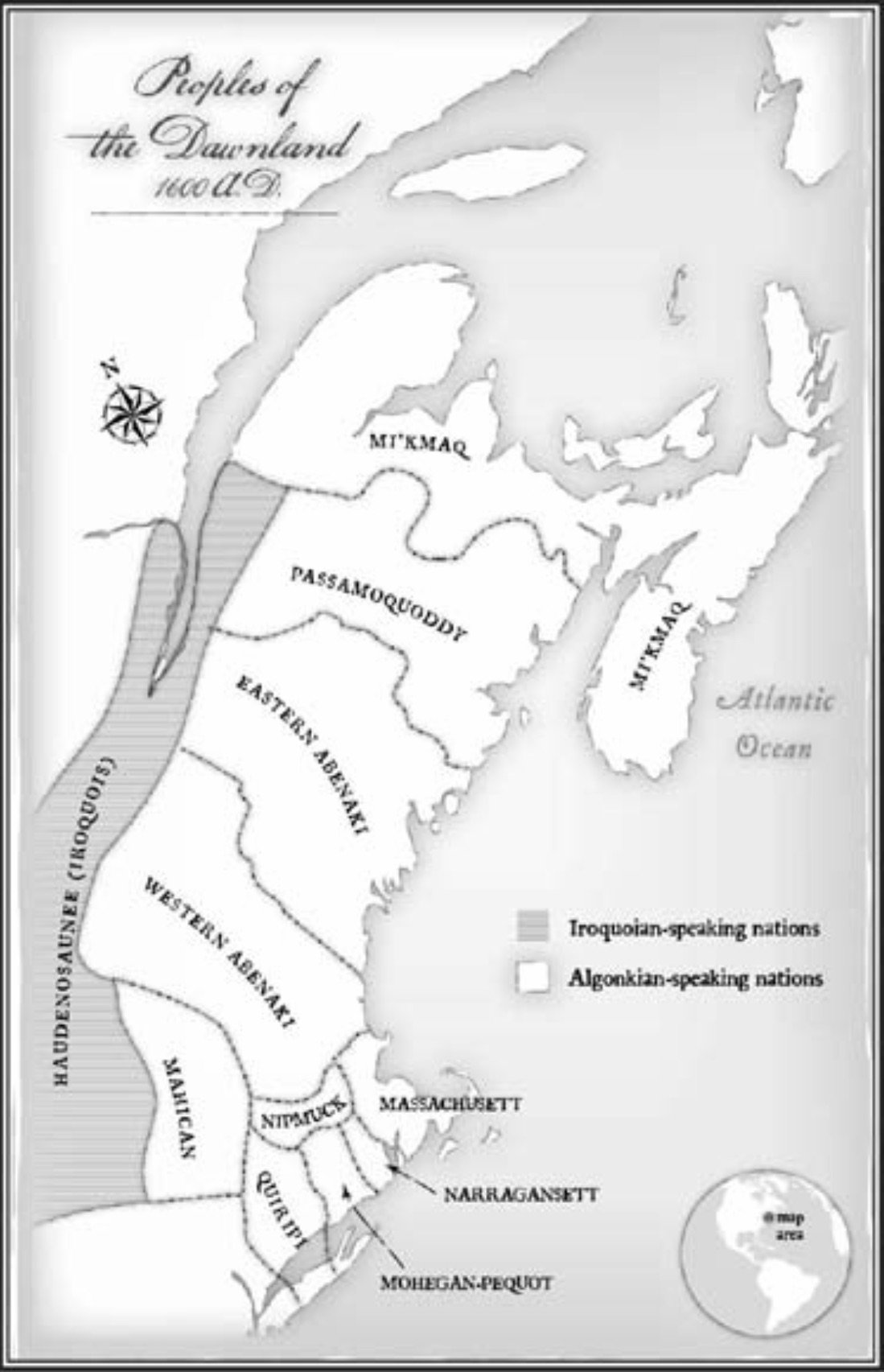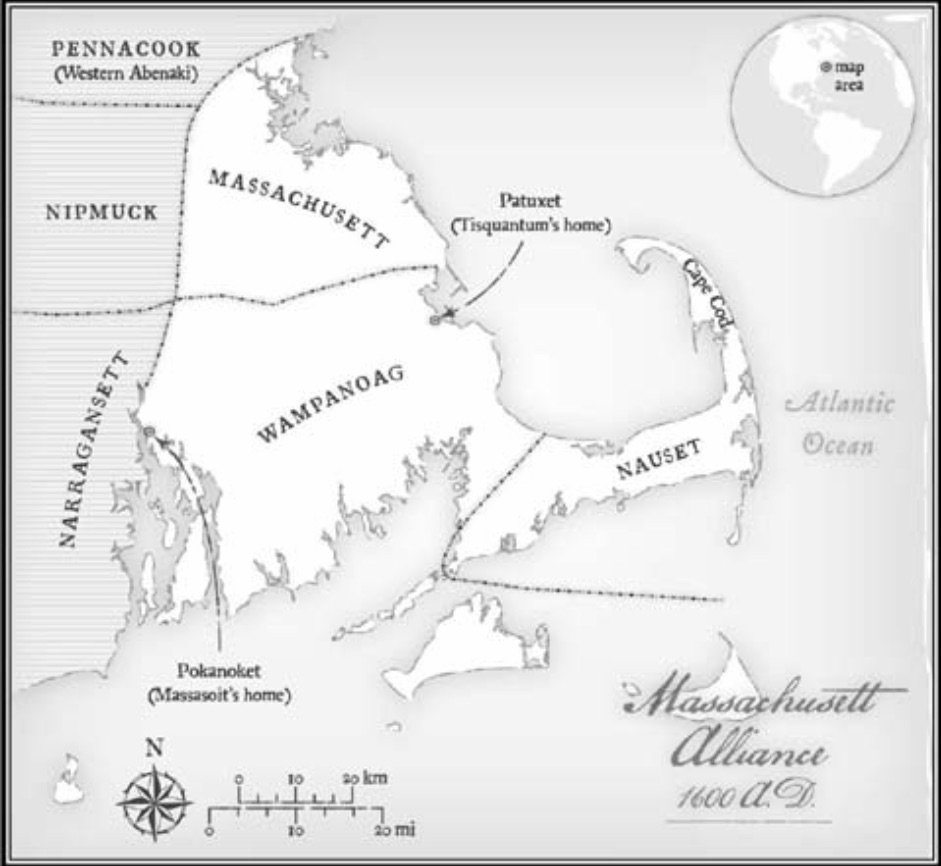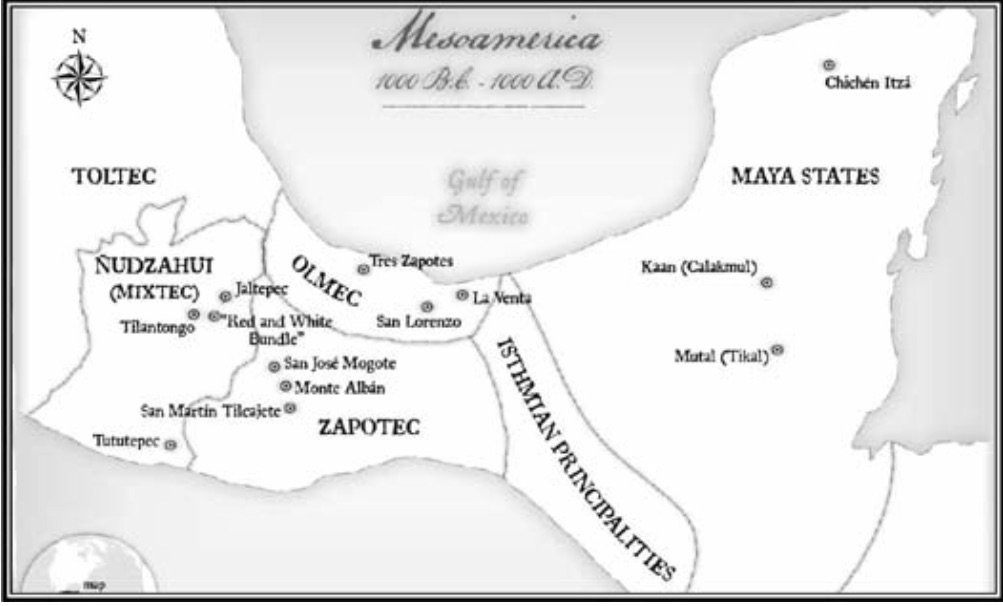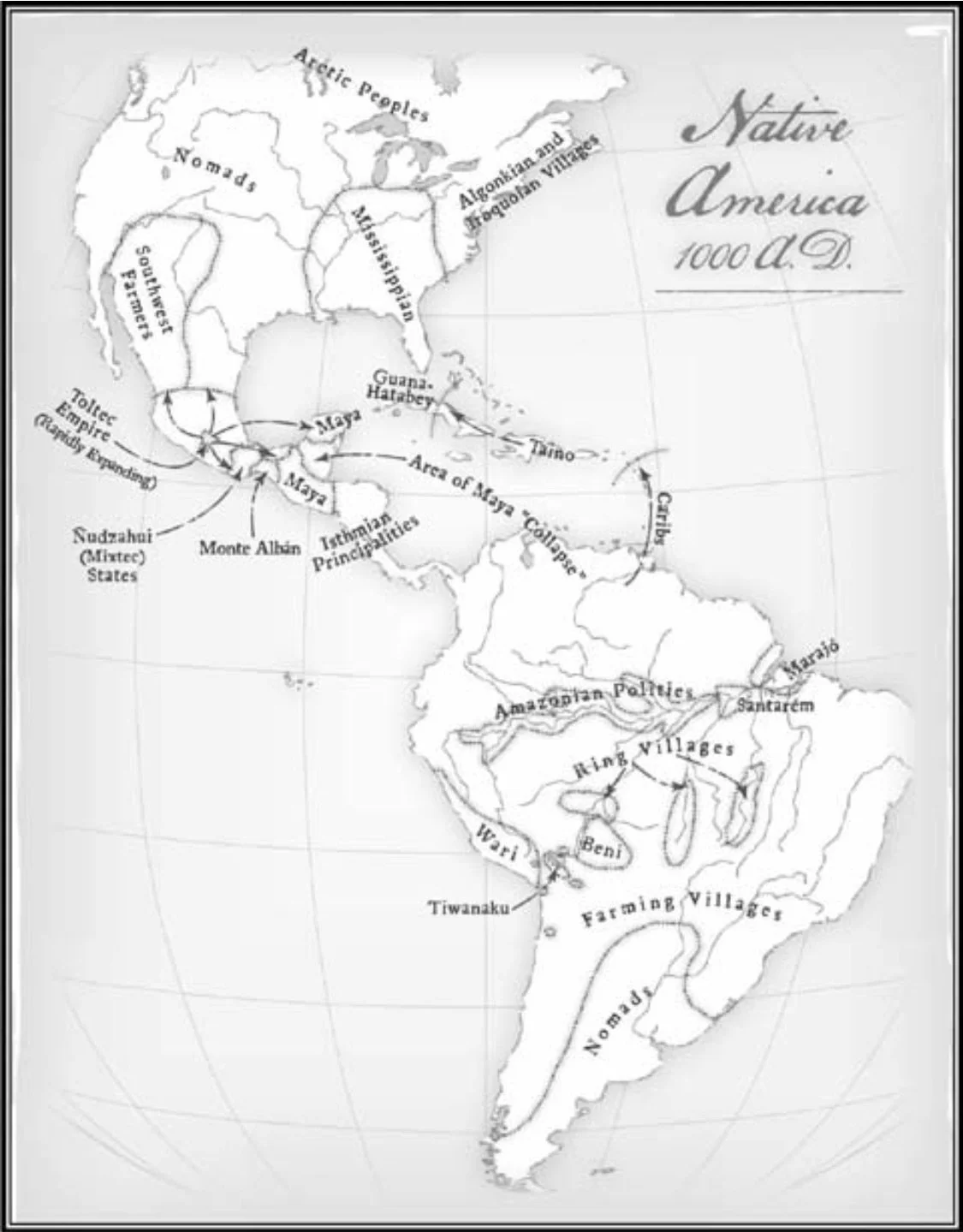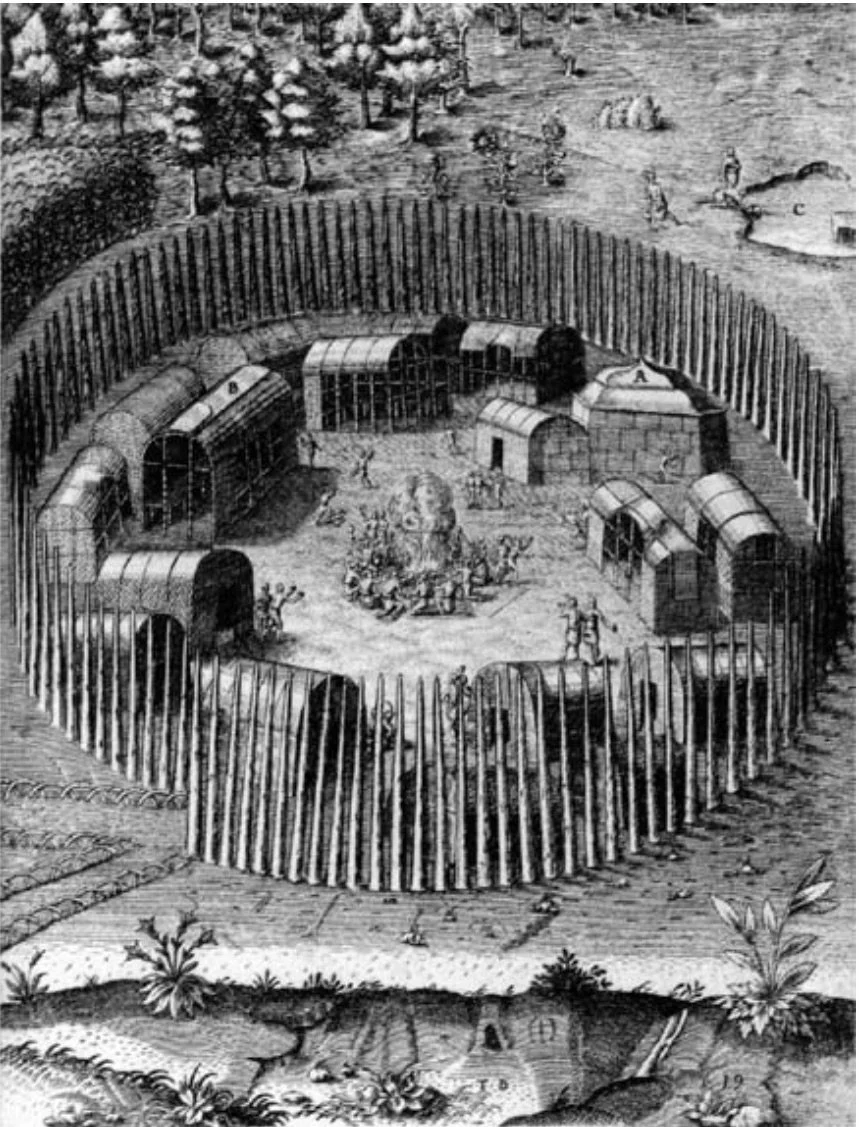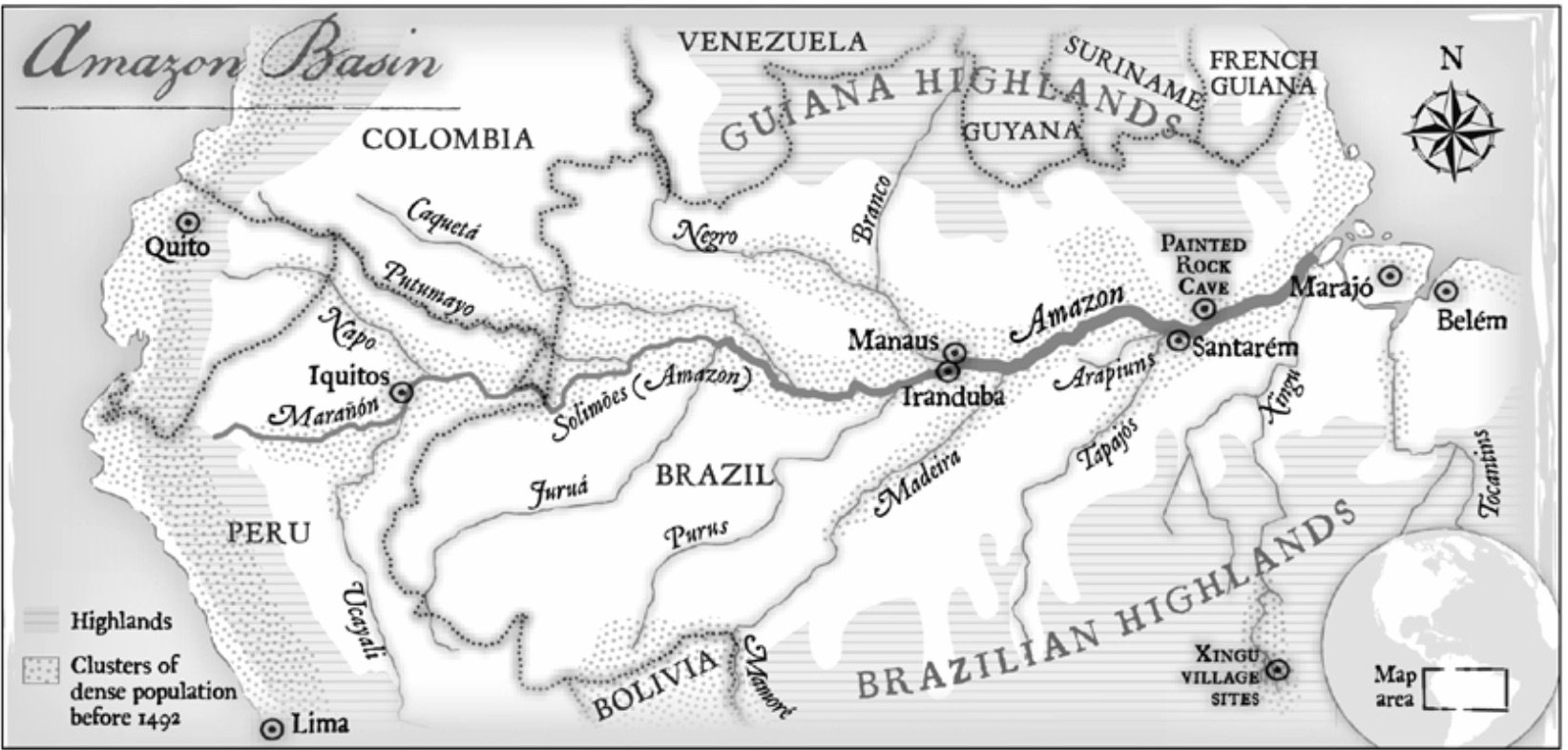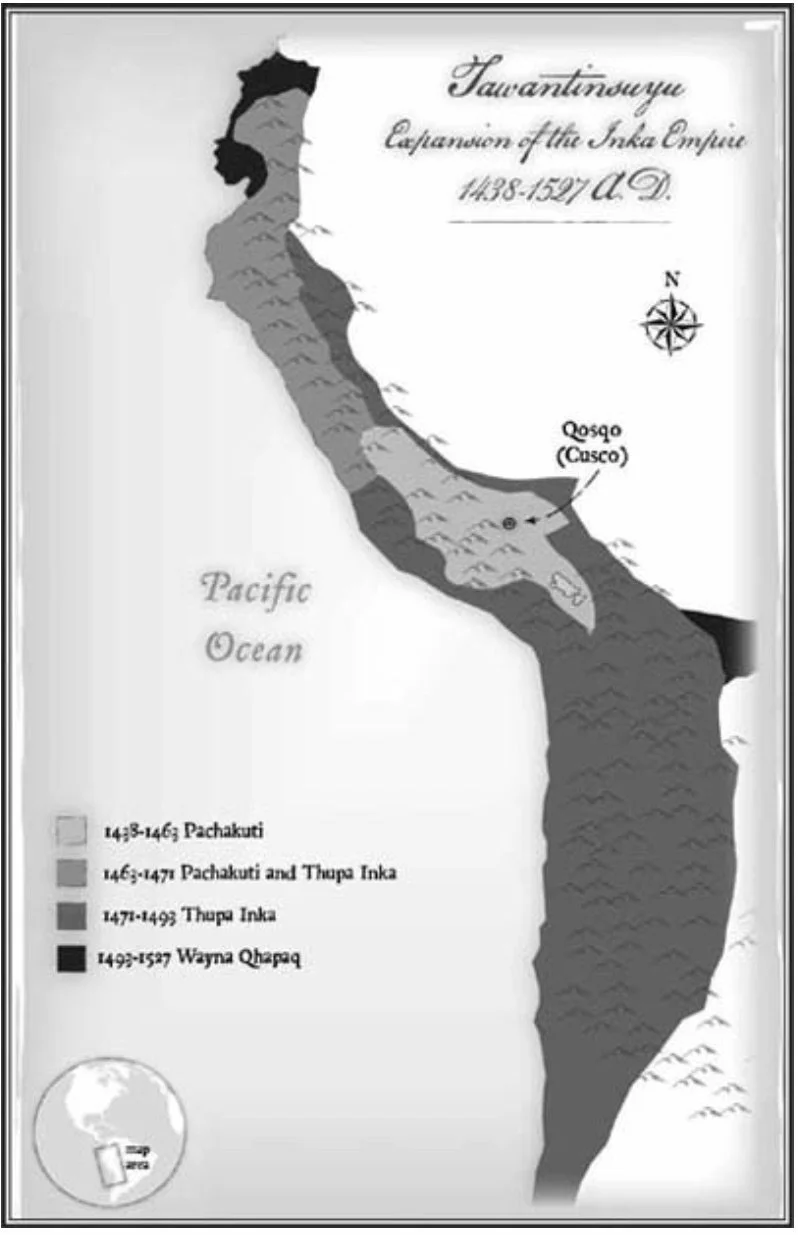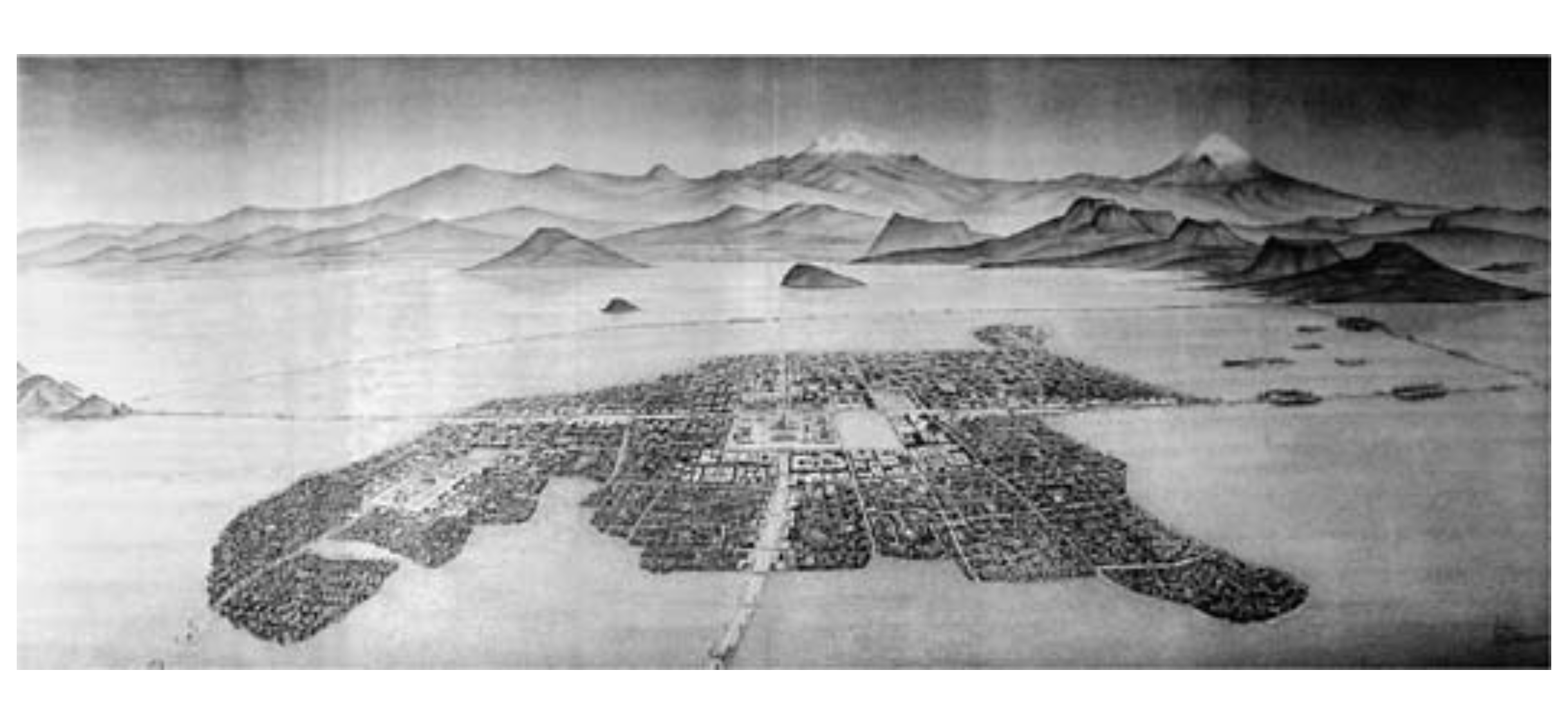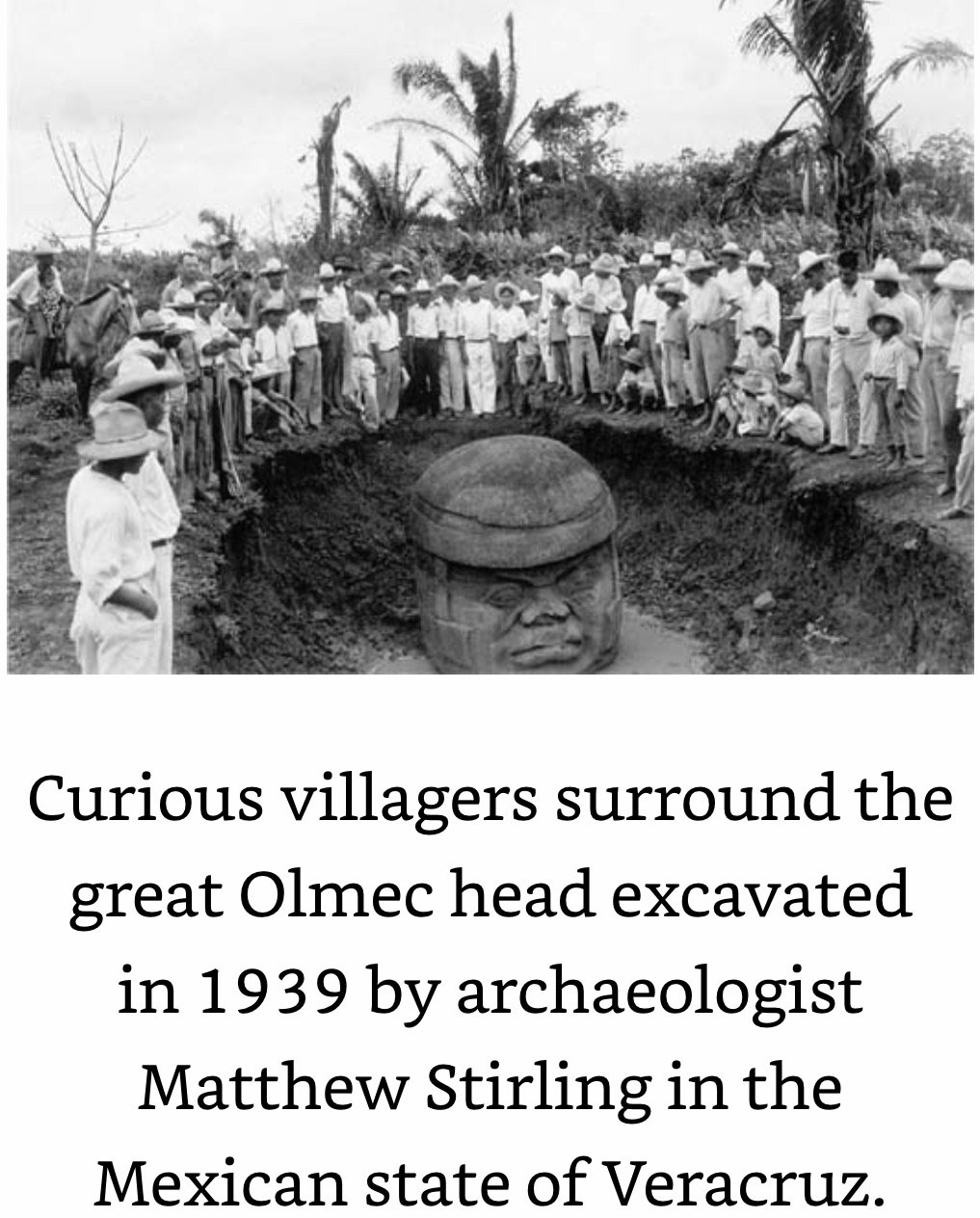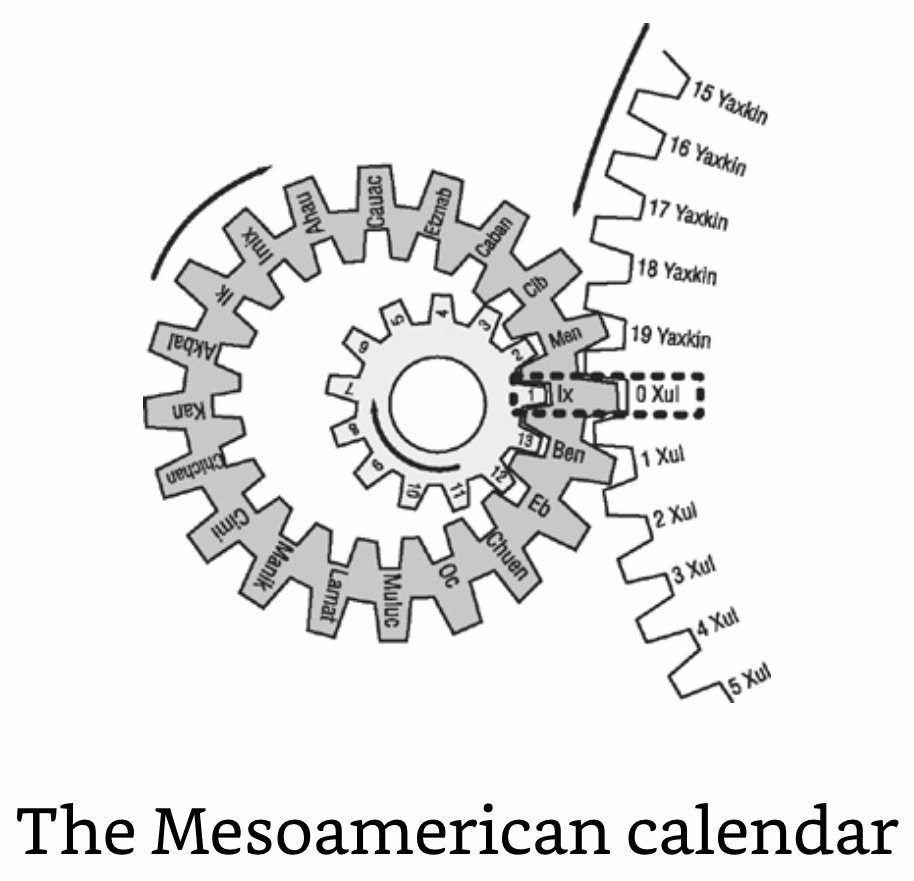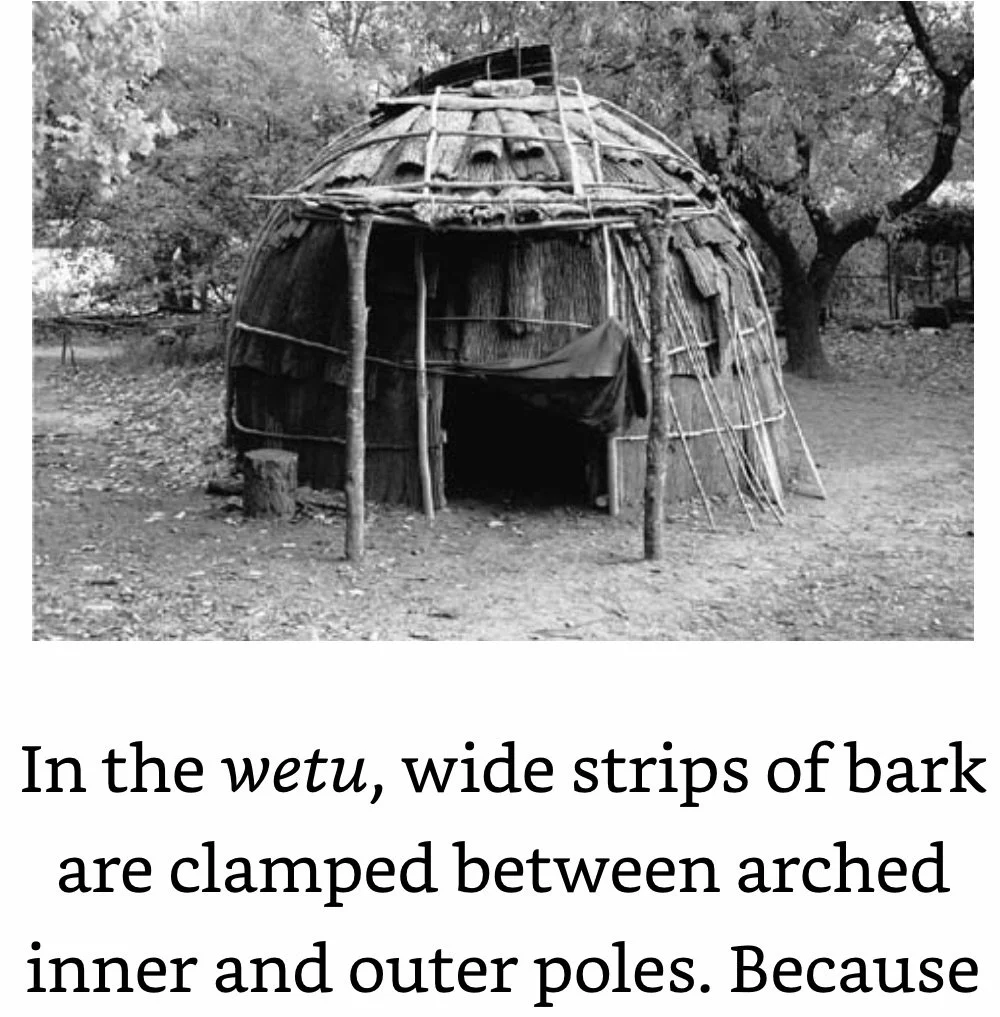1491 by Mann.
Ref: Charles Mann (2005). 1491: New Revelations of the Americas before Columbus. ISBN: 9780307278180.
_______________________________________________________________________________
Summary
When I went to high school, in the 1970s, I was taught that Indians came to the Americas across the Bering Strait about 13 ka, that they lived for the most part in small, isolated groups, and that they had little impact on their environment that even after millennia of habitation the continents remained mostly wilderness. In reality, the Americas seen by the first colonists were a wildland of thundering herds and forests with sky-high trees and lakes aswarm with fish. By the time of Columbus, the Western Hemisphere had been thoroughly painted with the human brush. Agriculture occurred in as much as two-thirds of what is now the continental United States, with large swathes of the Southwest terraced and irrigated. Among the maize fields in the Midwest and Southeast, mounds by the thousand stippled the land. The forests of the eastern seaboard had been peeled back from the coasts, which were now lined with farms. Salmon nets stretched across almost every ocean-bound stream in the Northwest. And almost everywhere there was Indian fire. The Western Hemisphere before 1492 was a thriving, stunningly diverse place, a tumult of languages, trade, and culture, a region where tens of millions of people loved and hated and worshipped as people do everywhere.
The Pristine Myth (‘Holmberg’s Mistake’): The belief that the Americas in 1491 were an almost untouched, even Edenic land, “untrammeled by man.”
Beliefs about Indians’ inherent simplicity and innocence refer mainly to their putative lack of impact on the environment. This notion dates back at least to Henry David Thoreau, who spent much time seeking “Indian wisdom,” an indigenous way of thought that supposedly did not encompass measuring or categorizing, which he viewed as the evils that allowed human beings to change Nature.
The Indian population in 1491 was between 90 and 112 million people; more than in Europe.-Dobyns.
In the first 130 years of contact with Europeans, about 95% of the people in the America’s died.-Dobyns.
Very probably the greatest demographic disaster in history, the depopulation of the New World, for all its terror and death, was largely an unintended tragedy.-Steven Katz.
_______________________________________________________________________________
Beringia & the Ice Sheets
During the Ice Ages so much of the world’s water was frozen into glaciers that sea levels fell as much 400’. The strait between Siberia’s Chukotsky Peninsula and Alaska’s Seward Peninsula is now only 56 miles wide and about 120’ deep, shallower than many lakes. The decline in sea levels let the two peninsulas join up. In theory, Paleo-Indians simply walked across the strait.
Beringia was easily traversable. Western Canada was not, because it was buried beneath two massive, conjoined ice sheets, each thousands of feet deep and two thousand miles long.
The combination of land bridge and ice-free corridor occurred only once in the last 20K years, and lasted for just a few hundred years. And it happened just before the emergence of what was then the earliest known culture in the Americas, the Clovis culture, named for the town in NM where its remains were first observed.
Hopping from refuge to refuge, Paleo-Indians could have made their way down the coast at any time in the last 40K years. “Even primitive boats could traverse the entire Pacific coast of North and South America in less than 10–15 years.”-Fladmark.
The Paleo-Indians who went south would not have had a difficult journey, because they arrived a little bit before the peak of the last Ice Age—before the two glacial sheets in Canada merged together. When that ice barrier closed, the Indians who stayed in Beringia were stuck there for the duration: almost 20K years. Finally, the temperatures rose, and some of them went south, creating a second wave and then, possibly, a third. In other words, just one group of Paleo-Indians colonized the Americas, but it did so two or three times.
_______________________________________________________________________________
Ecology
Fire
Indians maintained and expanded the grasslands by regularly setting huge areas on fire. Over centuries the burning created an intricate ecosystem of fire-adapted plant species dependent on indigenous pyrophilia.
A 2009 study of surviving trees from the pre-European era shows that even in thickly forested areas, fires intense enough to scar trunks occurred, on average, every 2.82 years. Because “lightning strikes in [this area] are usually accompanied by rain that would quickly extinguish any lightning fires,” researchers from S. Illinois U. and Principia College wrote in 2010, “nearly all of these early fires” were likely due to human activity. Further W, the same burning occurred, but on an even grander scale. Native Americans burned the Great Plains and Midwest prairies so much and so often that they increased their extent.
Precipitation
Over most of the S. American landmass, the prevailing winds come from the E, across Brazil. As the warm, wet Amazonian air hits the towering Andes, it cools and sheds its moisture in the form of snow. Almost nothing is left for the Peruvian coast, which sits in the mountains’ rain shadow. Surprisingly, the coast is also walled off from moisture on the Pacific side, where the trade winds create a second rain shadow. Blowing from the SW, the trades push the warm surface waters northeast, pulling frigid water from the deep offshore trench to the surface. The upwelling, known as the Humboldt Current, chills the air above it. Coming from the W, the Pacific trade winds hit the cold air from the Humboldt Current and are forced upward in a classic temperature inversion of the sort common in SOCAL. In temperature inversions, air movement is inhibited—the cold air can’t rise and the warm air doesn’t fall—which in turn inhibits rainfall. Walled off from wet air by both the Andes and the Humboldt Current, the Peruvian littoral is astonishingly dry: the average annual precipitation is about 2”. The Atacama Desert, just south of Peru on the Chilean shore, is the driest place on earth—in some places rain has literally never been recorded. Space researchers use the Atacama as a model for the sands of Mars.
River flooding leaves behind a layer of rich sediment.
Agriculture
Andean Agriculture: Based on potatoes, beans, manioc (cassava).
The onset of maize agriculture increased surface runoff in the Delaware River valley by 50%- coupled with the near disappearance of pollen from bottomland trees in those sediments.-2011 Study.
Indians converted the Mexican basin and Yucatán into artificial environments suitable for farming. Terraces and canals and stony highways lined the western face of the Andes. Raised fields and causeways covered the Beni. Agriculture reached down into Argentina and central Chile. Indians converted perhaps a quarter of the vast Amazon Forest into farms and agricultural forests and the once-forested Andes to grass and brush.
Law of Environmental Limitation of Culture (Meggers): The level to which a culture can develop is dependent upon the agricultural potentiality of the environment it occupies. The environmental potential of the tropical forest is sufficient to allow the evolution of culture to proceed only to the level represented by [slash-and-burn farmers]; further indigenous evolution is impossible, and any more highly evolved culture attempting to settle and maintain itself in the tropical forest environment will inevitably decline to the [slash-and-burn] level.
Terra preta: A black soil created directly around homes by charcoal kitchen fires and organic refuse of various types; contains more “plant-available” P, Ca, S, and N, bacteria, and organic matter than is common in the rainforest. It better retains moisture and nutrients and is not rapidly exhausted by agricultural use (when managed well). The key to terra preta’s long term fertility is charcoal, which contains up to 64x more than the surrounding red earth. Organic matter sticks to charcoal rather than washing away and, over time, partly oxidizes, providing sites for nutrients to bind to it.
In a preliminary test run at creating terra preta, Steiner, Wenceslau Teixeira of the Brazilian Agricultural Research Enterprise, and Wolfang Zech of the University of Bayreuth applied a variety of treatments involving charcoal and fertilizers for three years to rice and sorghum plots outside Manaus. In the first year, there was little difference among the treatments (except for the control plots, in which almost nothing grew). By the second year, Steiner said, “the charcoal was really making a difference.” Plots with charcoal alone grew little, but those treated with a combination of charcoal and fertilizer yielded as much as 880 percent more than plots with fertilizer alone. His “terra preta” was this productive, Steiner told me, despite making no attempt to re-create the ancient microbial balance.
Slash-and-Char: Practiced by Pre-Columbian Native Americans; the Incomplete burning of organic matter to produce charcoal which is mixed into low-productive soil, releasing much less C than slash-and-burn.
Slash & Burn (‘Swidden’): Agricultural practice of clearing tracts of lands by burning to add organic material to the soil followed by intensive agriculture, which increases productivity in the short term (~3y). Swidden is one of the driving forces behind anthropogenic GHG emissions and is wildly inefficient. The burning sends up in smoke most of the nutrients in the vegetation, nearly all the N, and half the P and K, adding huge amounts of CO2 into the air.
Many archaeologists now view slash-and-burn agriculture as a relatively modern technique whose spread was driven by European technology, particularly via the stone axe.
Slash and Burn is a superb response to ecological limits. Switching from field to field to field, swidden farmers live in the forest without destroying the ecosystems they depend on: a supple, balanced harmony. The major drawback is that it cannot yield enough to support a complex society. More intensive farming would destroy the land in as little as a decade. European style agriculture would not only fall victim to mega- Niño’s, it would permanently ruin the forest soils. -Betty Meggers.
1971: Amazonia: Man and Culture in a Counterfeit Paradise is published by Smithsonian archaeologist Betty Meggers. With little soil wealth to extract, she said, Amazonian farmers face inherent ecological limitations. The only form of agriculture they can practice for a long time is “slash-and-burn,” or “swidden,” as it is sometimes known. Farmers clear small fields with axes and machetes, burn off the chaff and refuse, and plant their seeds. The ash gives the soil a quick shot of nutrients, giving the crop a chance. As the crops grow, the jungle rapidly returns—weeds first, then fast-growing tropical trees. In the few years before forest recovers the plot, farmers can eke something out of the land.
Amazonia
The ecological constraints on tropical soils are in large part due to the gravitational energy of raindrops. Rainfall, drumming down day in and day out, pounds the top few inches of earth into slurry from which nutrients are easily leached and which itself easily washes away. In uncut forest, the canopy intercepts precipitation, absorbing the physical impact of its fall from the clouds. The water eventually spills from the leaves, but it hits the ground less violently. When farmers or loggers clear the tree cover, droplets shoot at the ground with more than twice as much force.
Most nutrients in tropical forests are stored not in the soil, as in temperate regions, but in the vegetation that covers it. When leaves or branches fall, the C and N in the debris are rapidly reabsorbed by the hyper-efficient root systems of tropical plants. If loggers or farmers clear away the vegetation, they also remove the local supply of nutrients. Normally the forest quickly fills in bare spots, such as those created when big trees fall, and damage is kept to a minimum. But if the opening is too large or the ground is kept clear too long, the sun and rain decompose whatever organic matter remains and bake the surface into something resembling brick in both color and impermeability. In short order, the land becomes almost incapable of sustaining life. Thus, the tropical forest, despite its fabulous vitality, exists on a knife edge.
The exuberant canopy of the Amazon Forest is a mask covering an impoverished base. The base is the region’s poor soil. No matter what its original condition, the intense rain and heat of the forest have eroded its surface, washed out all its minerals, and decomposed vital organic compounds. As a result, much of the red Amazonian soil is weathered, harshly acid, and almost bereft of essential nutrients—one reason ecologists refer to the tropical forest as a “wet desert.”-Paul Richards, 1952.
Symbiotic Relationships
T. americana (aka devil tree) & the red Ant: The ants occupy minute tunnels just beneath the bark. In return for shelter, the ants attack anything that touches the tree- insect, bird, etc.
Wild Beans & Teosinte: Beans use the tall teosinte as a ladder to climb towards the sun; below ground, the beans’ N- fixing roots provide nutrients needed by teosinte.
_______________________________________________________________________________
C14 Dating
Cosmic Rays, subatomic particles, continually rain onto the Earth from outer space.
Particles collide with air molecules in the upper atmosphere, knocking off fragments that in turn strike other air molecules.
The cascade of interactions creates a trickle of carbon-14 (C14), a mildly radioactive form of C that decays into N.
The rate at which cosmic rays create C14 is roughly equal to the rate at which it decays. As a result, a small but steady percentage of the C in air, sea, and land consists of C14.
Plants take in C14 through photosynthesis, herbivores take it in from the plants, and carnivores take it in from them. In consequence, every living cell has a consistent, low level of C14—they are all very slightly radioactive.
When people, plants, and animals die, they stop assimilating C14. The C14 already inside their bodies continues to decay, and as a result the percentage of C14 in the dead steadily drops. The rate of decline is known precisely; every 5,730 years, half of the C14 atoms in nonliving substances become regular carbon atoms.
By comparing the C14 level in bones and wooden implements to the normal level in living tissues, scientists can determine the age of these objects.
_______________________________________________________________________________
DNA
All human beings have two genomes:
Chromosomal DNA
Mitochondrial DNA: Minute, bean shaped objects, which bob around in the salty envelope of the cell, using O and releasing energy. Mitochondria is believed to have descended from bacteria and somehow became incorporated into one of our evolutionary ancestors. They replicate using their own genome (< 50 genes). Sperm cells are basically devoid of mitochondria so almost all of an embryo’s mitochondria come from the egg; children’s mitochondria are identical to their mothers through generations.
Haplogroup: People sharing similar Mitochondrial DNA.
Sperm have ~50-100 mitochondria, just enough to power them through their short lives. By contrast, the egg has ~100,000 mitochondria. When the sperm joins the egg, the egg eliminates sperm mitochondria.
Turner measured “28 key crown and root traits” in more than 200K Indian teeth. He discovered that Indians formed “three New World dental clusters” corresponding to Greenberg’s Aleut, Na-Dené, and Amerind.
By counting the number of mutations that appeared in one group and not the other, the rate at which two groups’ mitochondrial DNA had separately changed in the millennia since their separation was ~.2-.3% per 10K years. Using this rate of genetic change as a standard, they estimated the original group had migrated to the Americas some 22,414 to 29,545 years ago, ~10k years before Clovis.-Neel & Wallace.
By tallying the accumulated genetic differences in Haplogroup A members, its calculated that Indians had left Asia ~ 33-43 ka.-Bonatto and Bolzano.
_______________________________________________________________________________
Animalia
Indians domesticated only the dog; the turkey (in Mesoamerica); and the llama, the alpaca, the Muscovy duck, and the guinea pig (in the Andes).
Mammals
Llama: Typically weighing ~300lbs; the biggest animal in the Andes during Inka times.
_______________________________________________________________________________
Plantae
Grain in wild grasses develops near the top of the stem. As it matures, the stem slowly breaks up—shatters, in the jargon—letting the seed dribble to the ground. In wild wheat and barley, a common single-gene mutation blocks shattering. For the plant the change is highly disadvantageous, but it facilitates harvest by humans—the grain waits on the stem to be collected.
Cotton: ~40 species of cotton exists worldwide, of which 4 have been domesticated- two in the Americas, two in the Middle East and South Asia. Cotton was known in Europe by the 13th century but not common until the 18th.
Gossypium barbadense (S. American Cotton): Grew wild along S. Americas Pacific & Atlantic Coasts; potentially domesticated in Amazonia near the river’s mouth.
Gossypium hirsutum (Mexican Cotton): Provides most of the world’s harvest.
Lactose: A form of sugar abundant in milk; few Indians carry the gene that permits adults to digest lactose.
Maize (Corn): Yields more grain per area than any other cereal species.
Reproduction: Maize is open pollinated—it scatters pollen far and wide. Because wind frequently blows pollen from one small maize field onto another, varieties are constantly mixing. However, because maize kernels are wrapped inside a tough husk, human beings must sow the species—it essentially cannot reproduce on its own.
Maize’s closest relative is a mountain grass called teosinte that looks nothing like it (teosinte splits into many thin stems, whereas maize has a single thick stalk).
By the 19th century, maize was the daily bread of Serbia, Romania, and Moldavia. So dependent did N. Italy and SW France become on polenta, a type of cornmeal mush, that pellagra (caused by eating too much maize) became widespread.
Modern hybrids are so productive that despite the distances involved U.S. corporations can sell maize for less in Oaxaca than can locals.
Manioc (‘Cassava’): A hefty root that grows nearly everywhere and can be roasted, chopped, fried, fermented, and grinded into a variety of foods.
Peach: Proliferated in the US SE with such fervor that by the 18th Century, farmers feared that the Carolinas would become “a wilderness of peach trees.”
Peach Palm (Bactris gasipaes): An Amazonian tree with myriad uses, including flour, beer, wine. In terms of yield per acre, peach palms are typically much more productive than rice, beans, or maize.
Potato (tuber): Grows at altitudes of 14k’ and cultivated in hundreds of varieties. Can be left in the ground for as long as a year (as long as the soil stays above 27°F), to be dug up and cooked when needed.
_______________________________________________________________________________
Food
Dawnland diets averaged ~2,500 cal/day in 1600, more than those in Europe.
Maize lacks digestible niacin. Too much maize can lead to protein deficiency and pellagra. Beans have both lysine and tryptophan, but not the amino acids cysteine and methionine, which are provided by maize. As a result, beans and maize make a nutritionally complete meal. Squashes, for their part, provide an array of vitamins; avocados, fats.
The N. American NW Coast was a gatherer’s paradise: wild strawberries, wild blueberries, soapberries, huckleberries, thimbleberries, salmonberries; clams, cockles, mussels, oysters; flounder, hake, salmon.
Tortilla Cooking: First soak the dried maize kernels in a bath of lime and water to remove their thin, translucent skins (a process known as nixtamalizar). Then stone-grind the kernels into masa, a light, slightly sticky paste with a distinct maize fragrance. Made without salt, spices, leavening, or preservatives, masa must be cooked within a few hours of being ground, and the tortilla should be eaten soon after it is cooked. Hot is best, perhaps folded over with mushrooms or cheese in a tlacoyo.
_______________________________________________________________________________
Origin of Species & Items
Africa: Bananas, Coffee, Malaria, Millet, Yellow Fever.
Amazonia: Brazilian Broad Beans (Canavalia plagiosperma), Chili Peppers (Capsicum baccatum and C. pubescens, Manioc (Manihot esculenta), Peach Palm (Bactris gasipaes), Rubber (Hevea brasiliensis), Tobacco.
Americas: Squash, Syphilis.
Andes: Potatoes.
Central America: Peanuts, Pepper, Tomatoes.
China: Paper
Eurasia: Peaches, Rats.
Europe: Bluegrass, Clover, Grass (Lawn), Telescope.
India: Spinning Wheel.
Middle East: Algebra (Islam), Apple.
_______________________________________________________________________________
Warfare
Most battles consisted of lightning guerrilla raids by ad hoc companies in the forest: flash of black-and-yellow-striped bows behind trees, hiss and whip of stone-tipped arrows through the air, eruption of angry cries. Attackers slipped away as soon as retribution had been exacted. Losers quickly conceded their loss of status. Doing otherwise would have been like failing to resign after losing a major piece in a chess tournament—a social irritant, a waste of time and resources.
Even for a crack shot, an unrifled, early 17c gun had few advantages over a longbow.
Inka Soldiers wore armor made from sculpted, quilted cloth that was almost as effective at shielding the body as European armor and much lighter. After trying it, the conquistadors ditched their steel breastplates and helmets wholesale and dressed like Inka infantry when they fought.
Andean troops carried bows, javelins, maces, clubs, and slings.
“Expert sling users could hurl a stone with such force that it will kill a horse.… I have seen a stone, thus hurled from a sling, break a sword in two pieces when it was held in a man’s hand at a distance of thirty paces.”-Spanish Adventurer Enríquez de Guzmán.
_______________________________________________________________________________
Disease
Neither Europeans nor Indians had a secular understanding of disease. Sickness was the will of God.
Evolutionarily speaking, genetic homogeneity by itself is neither good nor bad. It can be beneficial if it means that a population lacks deleterious genes. In 1491, the Americas were apparently free or almost free of cystic fibrosis, Huntington’s chorea, newborn anemia, schizophrenia, asthma, and (possibly) juvenile diabetes, all of which have some genetic component.
Zoonotic Disease Evolution
Avian influenza became human influenza.
Bovine rinderpest became human measles.
Horsepox became human smallpox.
Smallpox Virus: Generally thought to have evolved from either Camelpox or Taterapox (Kemp’s Gerbil, a W. African rodent) ~15ka, when a chance mutation let the virus “jump the species barrier.” Neither the camel nor the gerbil existed in the Americas, so the disease never had a chance to exist there.
Swine (mainstays of European agriculture) transmit anthrax, brucellosis, leptospirosis, trichinosis, and TB. Pigs breed exuberantly and can pass diseases to deer and turkeys, which then can infect people.
Susceptibility of Indians to European Diseases
Nearly all researchers believe that the initial number of newcomers must have been small with a correspondingly homogenous gene pool. More than 9/10 Native Americans—and almost all S. American Indians have type O blood (whereas Europeans are more evenly split between types O and A).
Unlike Europeans, Indians did not live in constant contact with many animals.
Human Leukocyte Antigens (HLAs): Molecules inside most human cells that are key to one of the body’s two main means of defense. HLA’s transport the snippets of material in cells to the cell’s surface, where they are constantly scanned by leukocytes (WBCs) which destroy the infected cell when any contamination is found. HLAs carry their burdens to the surface by fitting them into a kind of slot. If the snippet doesn’t fit into the slot, the HLA can’t transport it, and the rest of the immune system won’t be able to “see” it. All people have multiple types of HLA, which means that they can bring almost every potential problem to the attention of their leukocytes, however no one person’s immune system has enough different HLAs to identify every virus- some will escape notice.
Most human groups are a scattershot mix of HLA profiles, which means that almost always some people in the group will not get sick when exposed to a particular pathogen, while people with similar HLA profiles fall victim to the same diseases in the same way.
Europe, Asia, and Africa population have at least 35 main HLA classes; African near-identical HLA profiles is ~1:200. In Europe, the probability that a pathogen in one host will next encounter a host with a similar immune spectrum is less than 2%.
Native American populations have no more than 17 HLA classes, dominated by a small number of types; Native American near-identical HLA profiles is ~1:3. In South America, the minimum probability that a pathogen in one host will next encounter a host with a similar immune spectrum is about 28%.
Indians’ closest genetic relatives are indigenous Siberians. In the train of the Russian fur market came Russian diseases, notably smallpox. The tally cannot be taken as exact: a single epidemic killed more than three of every four indigenous Siberians in that area. On an individual level, they were almost as vulnerable as Indians.
Orthodox Darwinian Theory: Predicts that over time the effect of most transmissible diseases should moderate—the most lethal strains kill their hosts so fast they cannot be passed on to other hosts.
Helper-T cells: Two main types, one that targets microorganisms and one that targets parasites. The body cannot sustain large numbers of both, and hence adult immune systems tend to be skewed toward one or the other, usually depending on whether as children they were more often exposed to microorganisms or parasites. Indians have historically been burdened by flukes, tapeworms, and nematodes, so they have long had majorities of parasite-fighting helper-T cells. Europeans, who grew up in germ-filled environments, usually lean the other way.
Syphilis (caused by Treponema pallidum): A wormlike bacterium causing disease that occurs in four different forms (researchers disagree about whether the various forms are caused by different subspecies of T. pallidum).
Bejel: Creates small, cold sore-like lesions inside and around the mouth; mainly afflicts the Middle East.
Yaws: Infects cuts and abrasions and causes long lasting sores; found in tropical places worldwide,
Syphilis: Inflicts genital rashes and sores before it disappears and silently infects the hearts, bones, brain.
Pinta: Mild Skin Infection; found in Mesoamerica.
_______________________________________________________________________________
Language
Across the Americas, Indians spoke some 1,200 separate languages that have been classified into as many as 180 linguistic families. By contrast, all of Europe has just 4 language families—Indo-European, Finno-Ugric, Basque, and Turkic—with the great majority of Europeans speaking an Indo-European tongue.
Using glottochronology it is estimated that Aleut ancestors crossed the strait around 2000 B.C. and that the ancestors of Na-Dené had made the journey around 7000 B.C. As for Amerind, probably greater than 11K years.
_______________________________________________________________________________
Slavery
Disease leveled Indian societies. Faced with a labor shortage, the Europeans turned their eyes to Africa. The continent’s quarrelsome societies helped them siphon off millions of people.
Indian deaths (due to disease) were such a severe financial blow to the colonies that they led to an economic depression that lasted more than a century. To resupply themselves with labor, the Spaniards began importing slaves from Africa.-Borah.
Most slaves were prisoners of war, seized in intertribal conflicts and sold by enemy Indian groups to the English in exchange for guns, pots, and axes.
The division line between slave and non-slave societies occurs in VA, broadly along the Mason-Dixon line. The SE climate and soil favor plantation crops like tobacco and cotton. And southern colonists’ preference for slavery presumably reflected their different ethnic, class, and religious backgrounds.
_______________________________________________________________________________
Goods
Indian moccasins were so much more comfortable and waterproof than stiff, moldering English boots
Indian birchbark canoes were faster and more maneuverable than any small European boat.
_______________________________________________________________________________
Childhood
Europeans in those days tended to view children as moving straight from infancy to adulthood around the age of seven, and often thereupon sent them out to work.
When Indian boys came of age, they spent an entire winter alone in the forest, equipped only with a bow, a hatchet, and a knife.
__________________________________________________________________________________
Cultures- North America
Ani Yun Wiya aka the Cherokee (~1794-1907)
Cherokee: A mildly insulting name coined by their enemies, the Creek confederation.
Nermernuh aka Nemene or Comanche (~1700-1900)
Comanche: “People who want to fight me all the time.”
A collection of hunting bands originally based N. of Santa Fe who dominated the S. Plains driving away the Apache and the Hopi.
Blackfoot (~Post Columbus to Present)
A tightly organized confederation of groups that inhabited the plains between the Missouri and Saskatchewan Rivers.
Wampanoag (Unk- present)
Part of a tripartite alliance with two other confederations: the Nauset, which comprised some 30 groups on Cape Cod; and the Massachusett.
Haudenosaunee aka Iroquois League (31 Aug, 1142-1784)
A loose military alliance among the five nations, the Seneca, Cayuga, Onondaga, Oneida, Mohawk and, after ~1720, the Tuscarora, living in the Finger Lakes of NY. One of the greatest indigenous polities north of the Río Grande in the two centuries before Columbus and definitely the greatest in the two centuries after.
Deganawidah (‘the peacemaker’) and Ayenwatha persuaded the five nations to form an alliance instead of constantly fighting.
Politics & Leaders
Decision by consensus.
The female were the heads of clans who chose the male sachems. As a rule, sachems were succeeded by their nephews, but the system was not entirely hereditary—sachems could be impeached if they displeased their clan, and if their nephews were not deemed fit for office, someone outside the family could take over.
The 117 codicils of the Haudenosaunee Great Law were concerned as much with establishing the limits on the great council’s powers as on granting them. Its jurisdiction was strictly limited to relations among the nations and outside groups; internal affairs were the province of the individual nations.
Although the council negotiated peace treaties, it could not declare war—that was left to the initiative of the leaders of each of Haudenosaunee’s constituent nations.
According to the Great Law, when the council of sachems was deciding upon “an especially important matter or a great emergency,” its members had to “submit the matter to the decision of their people” in a kind of referendum.
Female-led clan councils set the agenda of the League—“men could not consider a matter not sent to them by the women.” Women, who held title to all the land and its produce, could vote down decisions by the male leaders of the League and demand that an issue be reconsidered.
Mississippian (~700-1500)
The largest concentration of people North of the Rio Grande.
Homeland: Mississippian River Valley with ruins at Cahokia including Monks Mound.
Hopewell (~200 BCE- 400)
Homeland: S. Ohio, extending across much of the continental US.
Adena (~500 BCE- 100)
Clovis (~13.8-11.4 ka)
_______________________________________________________________________________
People- North America
Pilgrims aka Mayflower passengers (1620): Often called “Puritans,” the pilgrims preferred Separatists because they separated from the Church of England, or “saints,” because their church was the “church of saints.”
Mataoka aka Pocahontas- ‘little hellion’ (1596- Mar, 1617): Lived under the Powhatan alliance, in tidewater VA as the daughter of emperor Wahunsenacawh. At age 12, she may have protected Smith, but not, as he wrote, by interceding when he was a captive and about to be executed in 1607. In fact, the “execution” was probably a ritual staged by Wahunsenacawh to establish his authority over Smith by making him a member of the group; if Mataoka interceded, she was simply playing her assigned role in the ritual. The incident in which she may have saved Smith’s life occurred a year later, when she warned the English that Wahunsenacawh, who had tired of them, was about to attack. In the Disney version, Smith returns to England after a bad colonist shoots him in the shoulder. In truth, he did leave Virginia in 1609 for medical treatment, but only because he somehow blew up a bag of gunpowder while wearing it around his neck.
Tisquantum (1585-1622)
Hernando de Soto (~1496- 21 May, 1542): Accompanied Pizarro to Tawantinsuyu, burnishing his reputation for brutality, personally torturing Challcochima, Atawallpa’s chief general, before his execution.
_______________________________________________________________________________
Chronology- North America
Mar, 2011: A research team led by Michael Waters from Texas A&M announce in Science a remarkable discovery: 15k artifacts at a site in central Texas predating Clovis by more than two millennia.-1491 by Mann.
2008-2009: Archaeologists at the U. of Oregon report finding coprolites (fossilized human excrement) and a scraping tool that was older than Clovis in a cave just 200 miles from the Pacific Coast.-1491 by Mann.
1811-1812: The Largest earthquake in US history lifts much of the central Mississippi Valley by as much as 12’.-1491 by Mann.
1792: British Navigator George Vancouver (with 2Lt Peter Puget) leads the first European expedition to survey Puget Sound.-1491 by Mann.
1781: Commanche raids abruptly stop.-1491 by Mann.
1780-1781: Smallpox strikes the Lakota (Sioux).-1491 by Mann.
1778: Washington inoculates the entirety of the Continental Army against smallpox during the Valley Forge Winter.-1491 by Mann.
1774-1776: Smallpox strikes Boston.-1491 by Mann.
1701: The leaders of 40 native nations convene in Montreal to negotiate an end to decades of war among themselves and the French; many die from Influenza including the Huron leader Kondiaronk.-1491 by Mann.
1675: The Massasoit launch attacks on European settlers.-1491 by Mann.
1670s: Europeans and Settlers first outnumber natives in N. America.-1491 by Mann.
~1650: Liberty in the Americas; Van der Donck, a prosecutor and bill collector for the Dutch West India Company in the Hudson River Valley, writes and delivers a complaint letter to the Hague, setting down the basic rights belonging to everyone on American Soil- the first formal call for liberty in the colonies.-1491 by Mann.
Jan, 1636: Rhode Island Colony is founded by Roger Williams after purchasing land from the Narragansett Indians and establishing a capital at Providence as a haven for Anabaptists and Quakers.-1491 by Mann.
1633: A Smallpox epidemic in New England kills a third to half of the remaining Indians.-1491 by Mann.
1630: Boston is founded by John Winthrop, with 700 other Colonists.-1491 by Mann.
Spring/Summer, 1622: Drought in New England; colonists crops wither.-1491 by Mann.
Spring, 1622: Tisquantum, seeking to oust Massasoit, relays to the Pilgrims that Massasoit and the Narragansett were planning a joint attack. Pilgrim Governor Bradford learns that Massasoit is at home and “all was quiet.” Massasoit demands that the Pilgrims hand over Tisquantum for execution. The colonists decide against surrendering Tisquantum; Massasoit cuts off trade.-1491 by Mann.
Fall, 1621: Thanksgiving; The settlers hold a feast of thanks to their situation having improved over the summer. Massasoit show up with 90 people, most of them young men with weapons. The Pilgrim militia responded by marching around and firing their guns in the air in a manner intended to convey menace. Gratified, both sides sat down, ate a lot of food, and complained about the Narragansett.-1491 by Mann.
Summer, 1621: Tisquantum bands together the few surviving Patuxet to reconstitute his old community near Plymouth, hoping that his influence with the English will make this new Patuxet the center of the Wampanoag confederation, thereby stripping the sachemship from Massasoit, who had held him captive.-1491 by Mann.
~22 Mar, 1621: A Native American delegation comprised of Massasoit, the sachem (Pol-Mil leader) of the Wampanoag Confederation, a loose coalition of several dozen villages controlling most of SE Massachusetts, Samoset, sachem of an allied group to the North, and Tisquantum, a distrusted captive, whom Massasoit had reluctantly brought along as an interpreter meet with British colonists at Plimoth (Plymouth); a deserted Indian settlement. The rest of the Indian party appeared without warning at the crest of a hill. Alarmed by Massasoit’s sudden entrance, the colonists withdrew to a hill on the opposite bank. Winslow, later governor, wearing a full suit of armor and carrying a sword, waded through the stream and offered himself as a hostage. At that meeting the Pilgrims obtained the services of Tisquantum (aka Squanto), who had learned English after being kidnapped by British sailors 7 years prior. The alliance Massasoit negotiated with Plymouth was successful from the Wampanoag perspective, for it helped to hold off the Narragansett.-1491 by Mann.
16 Dec, 1620: British Colonists land at Plymouth but don’t venture out (<3km) until early January (8 Jan, 1621) .-1491 by Mann.
9 Nov, 1620: The Mayflower anchors off the coast of Massachusetts with 102 people aboard; only half survive the first winter.-1491 by Mann.
1616-1619: Disease (likely Hep A from food) sweeps through coastal New England killing ~90% of Natives in the area. The healthy flee from the sick, carrying disease with them to neighboring communities.-1491 by Mann.
1616: A French ship wrecks at the tip of Cape Cod and, one by one, the crew is killed by the Nauset. The last five are kidnapped and sent to groups victimized by European Kidnappers. Another French vessel anchors in Boston Harbor at about the same time and the Massachusett kill everyone aboard, setting the ship afire.-1491 by Mann.
1616: “New England,” previously “Norumbega,” is termed by Europeans.-1491 by Mann.
1614: A British sailing vessel commanded by Hunt kills Patuxent Indians and kidnaps 19 (including Tisquantum), placing them aboard and sailing for Europe, stopping only once, at Cape Cod, where he kidnaps 7 Nauset. Hunt sold a few of his captives before local Roman Catholic priests seized the rest (the Spanish Church vehemently opposed brutality toward Indians).-1491 by Mann.
Summer, 1614: The Patuxent Indians with Tisquantum meet the red bearded Captain John Smith in ‘New England’. Smith had spent two months whale hunting with no success, before implanting plan B; “Fish and Furs.” Smith assigned his crew to catch and dry fish in one ship while he sailed up the coast bartering for furs. Smith was granted a cordial visit to the Patuxent before returning to England and convincing Prince Charles to award British names to a geographic and tribal map he had drawn. In this way Patuxent acquired its English name, Plymouth, after the city in England (it was then spelled “Plimoth”).-1491 by Mann.
1610: European exploration of N. America; Britain has ~200 vessels operating off Newfoundland and New England and hundreds more sail frequently from France, Spain, Portugal, and Italy.-1491 by Mann.
1579: Sir Francis Drake sails into San Francisco’s harbor.-1491 by Mann.
1539-1543: De Soto’s Army wanders through the modern US SE, including FL, GA, NC, SC, TN, AL, MS, AR, TX and LA, looking for gold and raping, torturing, enslaving, and killing countless Indians along the way.-1491 by Mann.
30 May, 1539: Hernando De Soto lands his private army of 600 soldiers, 200 horse, and 300 pigs near Tampa Bay after persuading Spanish King Charles V’s court to let him explore America.-1491 by Mann.
1523: The “People of the first light” are first described by Giovanni da Verrazzano, an Italian Mariner commissioned by the King of France to discover a water route North of the Americas to Asia. Sailing N. from the Carolinas, he observed that the coastline everywhere was “densely populated,” smoky with Indian bonfires; he could sometimes smell the burning hundreds of miles away.-1491 by Mann.
1510-1560: Conquistadors fail to take Florida half a dozen times.-1491 by Mann.
1501: Portuguese conquistador Gaspar Corte-Real abducts ~50 Indians from Maine, finding to his astonishment that two were wearing items from Venice: a broken sword and two silver rings.-1491 by Mann.
Tue, 11 Oct, 1492: Columbus lands at Hispaniola.-1491 by Mann.
13c: Cahokia is razed by a catastrophic earthquake, knocking down the entire western side of Monks Mound. The city is empty by ~1350.-1491 by Mann.
31 Aug, 1142: Founding of the Haudenosaunee (aka five nations) during a total solar eclipse in upstate NY after Deganawidah (‘the peacemaker’) and Ayenwatha of the Onondaga persuade the Seneca, Cayuga, Oneida, and Mohawk to form an alliance based in the Finger Lakes of NY instead of constantly fighting.-1491 by Mann.
1000: Construction of Cahokia (near modern St. Louis); an earthen structure covering 15 acres and rising to a height of ~30m. Atop the mound was the temple for the divine kings, who arranged for the weather to favor agriculture. Fields of maize rippled out from the mound almost as far as the eye could see.-1491 by Mann.
950-1250: Height of the Cahokia in the Mississippi River Valley.-1491 by Mann.
~400: Decline of Hopewell society in N. America.-1491 by Mann.
0: The Hopewell establish a trade network that covers most of N. America.-1491 by Mann.
1c BCE: Maize is first farmed in the N. Americas.-1491 by Mann.
800-100 BCE: The Adena interaction sphere; trade throughout N. America.-1491 by Mann.
1500 BCE: An archipelago of villages known as Poverty Point, arises in NE Louisiana.-1491 by Mann.
3400 BCE: Creation of the Ouachita mounds in NE Louisiana.-1491 by Mann.
13.8 ka- 11.4 ka: Clovis culture dominates N. America in the late Pleistocene; mastodon, armored rhinos, dire wolves, sabretooth cats, glyptodonts, giant beavers, giant turtles, sloths, ostriches, all vanish.-1491 by Mann.
__________________________________________________________________________________
Cultures- Central America
Aztec aka Triple Alliance- Mexica, Texcoco, Tlacopan (1428-1521)
Homeland: Valley of Mexico City based at Tenochtitlan on Lake Texcoco, an 80km long volcanic lake.
Language: Nahuatl.
Education: Every male citizen of the Triple Alliance attended school until the age of 16.
Economics
The Jade and Quetzal feathers were synecdoche for great value.
Mythology
Chalchíhuatl: The ineffable fluid of life that gives energy to the sun to rise. The sacred mission of the Triple Alliance was to furnish this vital substance to Huitzilopochtli, who would then use it for the sun, postponing the death of everyone on the planet. There was but one method for obtaining this life-energy: ritual human sacrifice. To obtain the victims, the sun needed a “marketplace” where he could go with his army (the army of the Triple Alliance) to buy victims, men for him to eat. Occasionally the victims were slaves and criminals, but mainly they were POWs. In this way the sacred mission of the Triple Alliance became translated into a secular mission: to obtain prisoners to sacrifice for the sun, the Alliance had to take over the world. Conquests were key to “the moral combat against evil.”
Huitzilopochtli: A martial god wearing a hummingbird shaped helmet and carrying a fire-breathing serpent as a weapon; instructed the Mexica priests through dream on where to found Tenochtitlan.
Ometeotl: Lord of the Close Vicinity; the omnipresent sustainer of the cosmos with 4 sons, one of which was Huitzilopochtli, all vying for supremacy since the beginning of time. Each day of sunlight was a victory that must be fought and won again the next day.
Mexica (Azteca): The dominant alliance member; they founded Tenochtitlan, the empire’s biggest city.
Mistakenly named Azteca by Alex von Humboldt.
Best known for assembling the greatest empire ever seen in Mesoamerica.
Among the Mexica, a council of clan elders chose the rulers, a speaker and a female serpent.
Tlatoani (speaker): A diplomatic/military commander who controlled relations with other groups.
Cihuacoatl (female serpent): Supervised internal affairs.
Ñudzahui aka Mixtec (~1100-Mid 1400s)
Homeland: Modern day Oaxaca Valley.
Toltec (~900-1150)
Homeland: Valley of Mexico City with an important temple at Tula.
Maya (~250-900)
Homeland: Yucatan, N. Belize, Guatemala.
Maya civilization bore striking similarities to that of ancient Greece. The Greeks were divided into numerous fractious communities, some of which were able to dominate others by threats of force, unequal alliance, or commerce. And just as the conflicted relationship among Athens and Sparta was a leitmotif of Greek life, so Maya society resounded for centuries with the echoes of the struggle between Mutal and Kaan.
City States
Mutal: Modern Tikal.
Kaan: Kingdom of the Snake at Calakmul, the largest of all Mayan ruins which houses as many as 50K people and sprawled across an area as big as 25sqmi. The downtown area alone had 6k masonry structures including homes, temples, palaces, granaries, even an 6m high defensive wall.
Mythology
The Maya saw the afterworld as a kind of endless, foggy sea. “Entering the water” was thus a euphemism on the order of “passed on to a better place.”
In the Maya creation story (the Popul Vuh); humans were created from maize.
Education/Writing
Maya Numbering System: A dot = 1, a horizontal bar = five.
Maya “books” consisted of painted bark folded accordion-style into sheaves known as codexes.
Economics
Usumacinta River: Yucatán’s most important trade route. Shipments of luxury goods from faraway regions usually had to travel up or down the Usumacinta.
Precipitation and Water
Rainy Season: May- Dec; most water rapidly sinks hundreds of feet into the porous limestone.
Dry Season: Jan- Apr; little water is available. Although the region has cenotes, they are often too salty to drink or use for irrigation.
So toxic is the groundwater that the Maya realm was “geochemically hostile” to urban colonization.- U.S.-Mexico research team, 2002.
Most salt occurs in the sediments on the swamp bottoms. To make the water potable, the Maya laid a layer of crushed limestone atop the sediments, effectively paving over the salt. “Permanent, year-round populations could be established only in the presence of an anticipatory engineering of water supplies.” The Maya heartland, in other words, was a network of artificially habitable terrestrial islands.
Mayan Calendar
The Internet is full of claims that the Maya calendar suddenly and dramatically ends on the date 13.0.0.0.0 (12 Dec, 2021). And when the calendar ends, didn’t the Maya predict a global calamity?
A four-zero date (like 13.0.0.0.0) occurs every 5,126 years in the Maya calendar.
The claim that 13.0.0.0.0 will lead to disaster dates back to 1996, when two modern epigraphers released a partial description of a Maya text on a broken monument found in the Mexican state of Tabasco. The monument, the epigraphers explained, “recorded a calendrical event in the early 21st century A.D., at which time, apparently, the god (Bolon Yokte’ K’uh) may ‘descend’ ye-ma, y-emal.” The “event,” the two scholars said, was apparently related to the fact that “the 13 baktuns will be finished at 13.0.0.0.0. in the Maya Long Count.” To some readers, this sounded like an ancient prophecy: on the day the calendar runs out of numbers, a celestial being will touch down on the planet—the end of life as we know it. Despite being printed as an aside—in a footnote, no less—in an archaeological journal, the “prophecy” was picked up by the surprisingly large number of people with a passionate interest in the implications of pre-Columbian timekeeping and active Internet connections.
Stephen Houston and David Stuart, the two original translators, later retracted their initial paraphrase and said the monument made no prophecy, they were attacked by what might be called “2012ologists,” who accused them of covering up the truth.
Mesoamerican societies developed three calendars to track celestial phenomena:
365-Day Secular Calendar: Tracked the Earth’s orbit around the sun.
260-Day Sacred Calendar: Possibly linked to the orbit of Venus.
Long Count Calendar: A one-by-one tally of the days since a fixed starting point thousands of years ago , beginning on ~ 11 Aug, 3114 BCE (or 10 or 13 Aug, or even 6 Sep).
Teotihuacan (~100 BCE- 750)
Homeland: Mexico City Valley.
Zapotec (~500 BCE- 800)
Homeland: Modern day Guerrero in Oaxaca Valley with an important temple at Monte Alban.
The date of one’s birth was such an important augury of the future that people often acquired that day as their name, i.e., “January 1.”
Olmec (~1200-400 BCE)
Homeland: Coastal Forests of Modern Veracruz with city states such as La Venta, Tlatilco, Tlapacoya.
Olmec (Nahuatl): People of the land of rubber (possible inventors of); the mother culture of Mesoamerica.
Language: Mixe-Zoquean
Rubber: Used and potentially invented by the Olmec by chemically treating the latex-containing sap of Castilla elastica.
Rituals
High-born Olmec were deformed by binding small, flat pieces of wood to newborns’ foreheads, they pushed up the soft infant bones, making the skull longer and higher than normal. To further proclaim their status, wealthy Olmec carved deep grooves into their teeth and pierced their nasal septa with bone awls, plugging the holes with ornamental jade beads.
_______________________________________________________________________________
Chronology- Central America
1780- 1781: Smallpox strikes Guatemala.-1491 by Mann.
Aug, 1779: Smallpox strikes Mexico City.-1491 by Mann.
1524: Spanish- Mexica battle over the nature of God in Tenochtitlan; 12 eminent Franciscan monks, who had traveled from Europe in a mission authorized by Pope Hadrian VI and 12 high priests from the Triple Alliance. In a sober ceremony, the Mexica abjured their old religion and embraced Christianity.-1491 by Mann.
Monks: “So infuriated was the Christian God by the Indians’ worship of idols and demons that he sent out “the Spaniards, / … those who afflicted you with tormenting sorrow, / by which you were punished / so that you ceased / these not few injuries to His precious heart.” The Triple Alliance was subjugated, in other words, because its people had failed to recognize the One True God. By accepting the Bible, the priests explain, the Mexica “will be able to cool the heart / of He by Whom All Live, / so He will not completely destroy you.”-1491 by Mann.
High Priests: The Indians had to pledge fealty to the Christian god, because their own “gods were not powerful enough to liberate them from the hands of the Spaniards.” In a sober ceremony, the Mexica abjured their old religion and embraced Christianity.-1491 by Mann.
23 Apr, 1520: An expedition led by Pánfilo de Narváez lands near modern Veracruz. The force purportedly included an African slave named Francisco Eguía or Baguía who had smallpox.-1491 by Mann.
1519-1521: Fall of Tenochtitlan; Cortes and his Tlaxcalan allies defeat the Triple Alliance.-1491 by Mann.
21 Aug, 1521: Fall of the Triple Alliance and the destruction of Tenochtitlan.-1491 by Mann.
Spring-Summer, 1521: The Spanish and their allies surround Tenochtitlan, fighting into the city through the summer. The Mexica resist so fiercely despite their weakness that the siege has been described as the costliest battle in history with casualties estimated at up to 100K.-1491 by Mann.
1520-1521: Smallpox strikes Tenochtitlan, killing a third of the population, including Cuitlahuac.-1491 by Mann.
Summer, 1520: Cortes persuades several other vassal states to join his anti- Triple Alliance alliance, building a force of 200K men with 13 locally built Spanish ships.-1491 by Mann.
Spring, 1520: The Mexica counterattack the Spanish in Tenochtitlan, Motecuhzoma dies in the ensuing melee. Soon after, the new Tlatoani, Cuitlahuac, assaults the Spanish and Tlaxcalan allies. The Spanish attempt to flee in the night and are caught under a pitiless hail of spears, darts, and arrows, Cortés and his men retreat down the long causeways that linked the island city to the mainland. In a single brutal night the Mexica vanquished Cortés, killing three-quarters of his men.-1491 by Mann.
Nov, 1519: Cortes with an army of ~20K Tlaxcalans enter Tenochtitlan, capturing Motecuhzoma (pronounced Mo-tayk-SZU-ma and inaccurately known as Montezuma) and making him their puppet.-1491 by Mann.
1519: Spanish-Tlaxcala Battles; Cortes fights with Tlaxcala, a confederation of four small kingdoms, that had maintained independence from the Triple Alliance. Cortés’s force shrank with every fight. He was on the verge of losing everything when the four Tlaxcala kings abruptly reversed course asking Cortes to join with Tlaxcala in a united assault on the hated Triple Alliance, which forced ever increasing tribute to Tenochtitlan.-1491 by Mann.
22 Apr, 1519: Cortés lands near modern Veracruz, marching inland from the sea.-1491 by Mann.
Winter, 1518: Smallpox is first recorded in Hispaniola, killing a third of the native population, before spreading to Puerto Rico and Cuba.-1491 by Mann.
1428: Formation of the Triple Alliance; Mexica Emperor Itzcoatl allies with two other small vassal states, overthrowing their mutual overlords and forming the Triple Alliance, with the Mexica as the most powerful. Itzcoatl’s nephew, Tlacaelel, came up with a theogony that transformed the Mexica into keepers of the cosmic order.-1491 by Mann.
1350: The Mixtec take control of the Zapotec in the Monte Alban valley. The two societies lived, through a combination of economics, warfare, and intermarriage.-1491 by Mann.
1250: The Mexica (Aztecas) move into the basin around Lake Texcoco and Teotihuacan following the collapse of the Toltec Empire. The Mexica sought a place to live, until one of the priests had a vision in a dream in which the Mexica’s patron deity instructed his people to look in the swamp for a cactus, atop which “you shall see an eagle … warming itself in the sun.” And the god called out to them, he said to them, “Oh Mexica, it shall be there!” (But the Mexica did not see who spoke.) For this reason, that they call it Tenochtitlan.-1491 by Mann.
1200: Fall of the Toltec Empire in Mesoamerica due to internal dissension.-1491 by Mann.
1115: Fall of the Mixtec city of Tilantongo; 4-Wind, allied with the Zapotec and several rebel groups besiege and defeat Tilantongo. In a mirror image of the past, the captured 8-Deer was forced to bow to 4-Wind, who personally disembowels him and marries his daughter. Shortly after, 4-Wind abandons the Zapotec allies who had helped him achieve the throne, aligns Tilantongo with the Toltec empire to the N, and attacks the Zapotec. Ultimately the Ñudzahui under his lead took over much of Oaxaca, forcing the Zapotec states to pay tribute.-1491 by Mann.
11c: Rise of the Toltec Empire in Mesoamerica.-1491 by Mann.
~1000: Collapse of Mayan Civilization, possibly due to a drought induced mega El- Nino event, striking millions into land poorly suited for intensive farming.-1491 by Mann.
987: Mayan Chichén Itzá is conquered by ousted Toltecan King Topiltzin Quetzalcoatl, who flees his throne in Mexico City for the Yucatán Peninsula, promising to return.-1491 by Mann.
800-900: A century-long dry spell strikes the Yucatán.-1491 by Mann.
800: Collapse of the Zapotec Empire.-1491 by Mann.
800-830: Decline of the Mayan Empire as the Mutal and their central cities fade away; due to overpopulation, overuse of natural resources, and drought, the latter shown through ethnohistoric data, rainfall and temperature measurement, O measurements in lake sediments, and studies of Ti levels in the Caribbean floor.-1491 by Mann.
8c: Fall of Teotihuacan for unknown reasons.-1491 by Mann.
~550-700: Mayan Civil War
5 Aug, 695: Mutal- Kaan Battle; The Mutal defeat the Kaan in battle; Kaan’s loss marks the onset of the Maya collapse. Kaan never recovered from its defeat; Mutal lasts only a century or so more.-1491 by Mann.
30 Apr, 679: Mayan Mutal-Kaan Battle; The Mutal under King Nuun Ujol Chaak are defeated by the Kaan, however a counterrevolutionary coup later places Mutal King Chaak’s son on the throne.-1491 by Mann.
672: Mutal King Nuun Ujol Chaak plots revenge against Kaan and its allies attacking Dos Pilas, ejecting his brother, and unifying Tikal.-1491 by Mann.
620: Mayan Civil War; Mutal Nuun Ujol Chaak rises to power. Determined to reestablish Mutal’s former glory, he suborns Kaan’s eastern neighbor, the Naranjo, which had previously attacked Mutal’s former ally, Oxwitza’. The ensuing conflict spiraled out to involve the entire center of the Maya realm. Decades of conflict, including a long civil war in Mutal, led to the formation of two large blocs, one dominated by Mutal, the other by Kaan.-1491 by Mann.
29 Apr, 562: The Star Wars Assault of the Mayan Civil War; the Kaan under Sky Witness and the Oxwitza’ march on Mutal and crush the city between them, killing its king.-1491 by Mann.
553: The King of Oxwitza’ assumes the throne by action of the Mutal (as a vassal).-1491 by Mann.
~550: ‘Sky Witness’ assumes control of the Mayan Kaan, setting out to destroy Mutal by ringing it with a chain of client states and allies; his first step was to suborn Mutal’s most important vassal, the king of Oxwitza’ (known as Caracol). With 115K people, Oxwitza was twice as populous as Mutal and controlled almost as much territory. Yet it had become Mutal’s vassal soon after Teotihuacan installed the new dynasty.-1491 by Mann.
500: King Yuknoom Ch’een assumes control over the Mayan Kaan.-1491 by Mann.
4c: The Maya consist of ~60 statelets scattered across modern N. Belize, Guatemala, and the Yucatán.-1491 by Mann.
14 Jan, 378: The Teotihuacán led by General Siyaj K’ak’ arrive in the Maya Mutal court of Tikal, attacking the city and killing Mutal King Chak Tok Ich’aak.-1491 by Mann.
357: The first recorded zero in the Americas occurs in a Maya carving.-1491 by Mann.
200: The Mayan Mutal and Teotihuacan open trade relations.-1491 by Mann.
2-3c: Construction of Teotihuacan’s Pyramid of the Sun, the third largest in the world.-1491 by Mann.
~0: Teotihuacan in Mesoamerica emerges as a military power.-1491 by Mann.
120 BCE: Second Zapotec Civil War; Monte Albán sacks Tilcajete a second time, burning the Kings palace to the ground and emptying the city, leaving Monte Albán firmly in control of Oaxaca. With nothing to impede it, Monte Albán swept out and established a domain of almost ten thousand square miles. For centuries it stood on equal ground with its neighbors, the rising Maya states to the east and Teotihuacan to the north.-1491 by Mann.
300 BCE: Dating of the earliest known Olmec writing, on a potsherd from Chiapas.-1491 by Mann.
350 BCE: Fall of the Olmec city of La Venta.-1491 by Mann.
375 BCE: First Zapotec Civil War; Monte Albán sacks Tilcajete. Undiscouraged, Tilcajete rebuilt itself on a better defensive position and acquired larger armies.-1491 by Mann.
400 BCE: Rise of the Mayan Kaan Empire in Central America.-1491 by Mann.
500 BCE- 700: Zapotec Monte Albán develops in Oaxaca, housing 17K people; the biggest and most powerful population center in Mesoamerica.-1491 by Mann.
1150-500 BCE: Height of the Olmec city of La Venta, with a 103-foot-tall clay mound.-1491 by Mann.
1200 BCE: Fall of the Olmec city of San Lorenzo to either revolution or invasion.-1491 by Mann.
1500 BCE: The Olmec build and occupy San Lorenzo, the first known large-scale settlement in Central America, covering 2.7 sqmi. Scattered around the San Lorenzo platform were stone monuments: massive thrones for living kings, huge stone heads for dead ones.-1491 by Mann.
1550 BCE: The Zapotec begin forming villages with defensive palisades in Oaxaca’s Central Valley.-1491 by Mann.
1800 BCE: Rise of the Olmec Empire in the narrow “waist” of Mexico. Olmec culture focused heavily on human sacrifice, invented systems of writing, established widespread trade networks, tracked the orbits of planets, created a 365-day calendar, recorded its history in accordion- folded books of fig tree bark paper called codices, and invented the zero.-1491 by Mann.
2000-1500 BCE: Milpa Harvests break 200lbs/acre for the first time, giving rise to the Olmec, Mesoamerica’s first great civilization.-1491 by Mann.
10 ka: The Neolithic Revolution (farming) in Mesoamerica.-1491 by Mann.
__________________________________________________________________________________
Cultures- South America
Inka (~1400-1535)
Language: Runa Sumi.
Writing: A sequence of knots on strings that formed a binary code.
Origin: The Inka began as a family of four brothers and four sisters who left Lake Titicaca for reasons unknown and wandered until they came upon Qosqo (Cusco, in Spanish).
Mythology (constructed by Pachakuti):
Awkaypata: The Center of the Empire and the Cosmos. From Awkaypata’s great plaza radiated four highways that demarcated the four asymmetrical sectors that divided the Empire (Tawantinsuyu: Land of the Four Quarters).
The Milky Way: A vast celestial river in Andean cosmology, crossing the Peruvian sky at an angle of about 28° to the earth’s orbit. For six months the stream of stars slants across the sky from, so to speak, NE to SW; the other six months it slants from SE to NW. The transition roughly coincides with the transition between dry and wet seasons—the time when the Milky Way releases life-giving water to Pacha Mama, Mother Earth—and divides the heavens into four quarters. Awkaypata: Reflecting this pattern, was the axis of the universe.
Gods
Wiraqocha: The Inka creator deity.
Political Ideology
All land and property belonged to the state.
Peasants worked periodically for the empire as farmers, herders, weavers, masons, artisans, miners, or soldiers. While they were on the road, the state fed, clothed, and housed them—all from goods supplied by other work crews. Conscripts built dams, terraces, and irrigation canals; they grew crops on state land and raised herds on state pastures and made pots in state factories and stocked hundreds of state warehouses; they paved the highways and supplied the runners and llamas carrying messages and goods along them.
The Inka did not even have markets.
Beliefs/Values
The Inka believed that idleness fomented rebellion.
The Inka used metals as a token of wealth, power and community affiliation, thus valuing plasticity, malleability, and toughness (as opposed to hardness, strength, toughness, and sharpness).
Chimor (~1000-1400)
The greatest empire ever seen in Peru following the collapse of Wari and Tiwanaku. Chimor spread to over 1200km of the coastline, and grew maize and cotton by irrigating some 50K acres around the Moche River.
Wari (~500-1000)
Tiwanaku (~200-800)
Capital: Tiwanaku city at an altitude of 4000m at the SW end of Lake Titicaca.
Moche (100-800)
Homeland: Coastal Peru with a capital at Huaca Del Sol.
Nazca (~0-700)
Nazca Lines: The prevailing theory is that the straight lines map out the area’s underground faults, which channel water.
Pukara (~0-200)
Norte Chico (~3700-1800 BCE)
_______________________________________________________________________________
People- South America
Gaspar de Carvajal (1500-1584): Author of the first written description of the Amazon. Carvajal joined the Dominican order and went to S. America to convert the Inka, arriving in 1536, four years after Atawallpa’s fall. Carvajal made many notorious claims including that halfway down the river the Spaniards were attacked by tall, topless women who fought without quarter and lived without men. When these “Amazons” wanted to reproduce they captured males.
Thupa Inka (1441-1493): Inka King; wore a multicolored braid twisted around the skull like a headband, from which hung a red tasseled fringe that fell across the forehead. He was carried on a golden litter and minions collected and stored every object he touched, food waste included, to ensure that no lesser persons could profane these objects with their touch. The ground was too dirty to receive the Inka’s saliva so he always spat into the hand of a courtier. The courtier wiped the spittle with a special cloth and stored it for safekeeping. Once a year everything touched by the Inka—clothing, garbage, bedding, saliva—was ceremonially burned.
_______________________________________________________________________________
Chronology- South America
1997: Signs of human habitation dating back more than 12ka are uncovered at an archaeological dig in southern Chile, directly contradicting the Bering Strait Theory.-1491 by Mann.
1992: Peru symbolically gives two miles of shoreline to Bolivia at Bolivia Mar.-1491 by Mann.
1988: Murder of Chico Medes in Brazil, a legendary rubber-tapper, union organizer, and anti-deforestation activist.-1491 by Mann.
1983: 96 Chinchorro cadavers are discovered beneath a massif in Arica, Chile.-1491 by Mann.
1970: Conquest of the Incas is published by John Hemming.-1491 by Mann.
1929: Chile returns most of Peru’s territory taken during the 1878 war; but not Bolivias.-1491 by Mann.
1927: Peruvian anthropologist Toribio Mejía Xesspe first publishes drawings of the Nazca Lines to the outside world, figures of animals and plants, almost a thousand geometric symbols, arrow-straight lines many miles long.-1491 by Mann.
1925-1926: A strong El Niño strikes Amazonia with so much dry heat that sudden fires kill hundreds, perhaps thousands, of people in the forest. Rivers dry up; their bottoms carpeted with dead fish.-1491 by Mann.
1894: Publication of the first written account of the Amazon by Gaspar de Carvajal written more than 300 years prior.-1491 by Mann.
1878: Bolivian-Chilean War; Chile invades and defeats Bolivia (supported by Peru), taking over Southern Bolivia as well as a chunk of Peru.-1491 by Mann.
1878: Hilarion Daza seizes power in Bolivia and raises taxes on Chilean- owned guano mines.-1491 by Mann.
1847: The History of the Conquest of Peru is published by William H. Prescott, detailing the fall of the Inka empire.-1491 by Mann.
1783: A smallpox epidemic strikes Ecuador.-1491 by Mann.
1781- 1783: A smallpox epidemic strikes Colombia.-1491 by Mann.
1618: Measles strikes Tawantinsuyu.-1491 by Mann.
1614: Diphtheria strikes Tawantinsuyu.-1491 by Mann.
1565: Smallpox strikes Tawantinsuyu.-1491 by Mann.
1558: Smallpox & Influenza strike Tawantinsuyu.-1491 by Mann.
1546: Typhus strikes Tawantinsuyu.-1491 by Mann.
1541: Gonzalo left the high Andean city of Quito at the head of an expedition of 200 to 280 Spanish soldiers (accounts differ), 2,000 pigs, and 4,000 highland Indians, the latter slaves in all but name. Carvajal accompanied the troops as chaplain.-1491 by Mann.
26 Dec, 1541: Francisco de Orellana, Gonzalo Pizzaro’s second in command and cousin, sets off in the expeditions prized boat with a crew of 59 to include Carvajal to obtain supplies.-1491 by Mann.
1533-1535: Smallpox strikes Tawantinsuyu.-1491 by Mann.
1532-1537: Spanish-Inka War; The Spanish defeat the Inka.
May, 1536: The Inka army burn Spanish-occupied Qosqo to the ground.-1491 by Mann.
1535: Battle of Hatun Xauxa; the Spanish defeat an Inka force, killing Emperor Thupa Wallpa. Mango Inka becomes Emperor, swearing allegiance to Spain in return for Pizarro killing Challcochima. Pizarro agrees and the Spaniards publicly burned Challcochima to death in the main plaza of the next town they came to.-1491 by Mann.
May, 1533: Atawallpa is garroted by the Spaniards after the lord of Cajamarca tells the Spanish that Atawallpa’s generals planned to attack Pizarro and free the emperor; two inka ran to Pizarro, claiming that had just fled the invading Army. Pizarro ordered him bound, convened a tribunal, and sentenced him to execution, the theory being that the approaching Army would not attack if its leader were dead. The Spanish Expedition sent to investigate returned reporting that no Inka Army was on the move and Thupa Wallpa became the new Inka; Remnants of the Inka Empire regroup in the hinterlands, and fight the Spanish for another 40 years. Pizarro had routed a force 50x larger than his own, won the greatest ransom ever seen, and vanquished a cultural tradition that had lasted five millennia—all without suffering a single casualty.-1491 by Mann.
Dec, 1532- May, 1533: Caravans of precious objects—jewelry, fine sculptures, architectural ornamentation are sent by llama to Cajamarca.-1491 by Mann.
16 Nov, 1532: Atawallpa is captured by Pizarro in Cajamarca; Pizarro hid his horses and cannons just within the buildings lining the town square. A Spanish priest presented Atawallpa with a travel-stained Christian breviary, which the Inka, to whom it literally meant nothing, impatiently threw aside, providing the Spanish with a legal fig leaf for an attack (desecrating Holy Writ). Pizarro, with 168 Spanish, wearing armor and mounted on horses, none of which the Indians had ever seen, suddenly charged into the square, panicking the Inca so greatly that hundreds died attempting to flee. The native troops desperately clustered around Atawallpa, supporting his litter with their shoulders even after Spanish broadswords sliced off their hands. Pizarro personally dragged down the emperor-to-be and hustled him through the heaps of bodies on the square to what would become his prison. Atawallpa offered to fill a room 22x17’ full of gold objects—and two equivalent rooms with silver—in exchange for his freedom. Pizarro quickly agreed to the plan. Atawallpa, still in command of the empire, ordered his generals to strip Qosqo of its silver and gold.-1491 by Mann.
Oct/Nov, 1532: Atawallpa’s forces stop in Cajamarca and learn that pale, hairy people who sat on enormous animals had landed on the coast.-1491 by Mann.
1532: Portuguese King João III divides the coast of Brazil into 14 provinces and dispatches colonists to each one. By 1550 only two settlements survive.-1491 by Mann.
1529-1532: Inka Civil War; Atawallpa defeats Washkar Inka in a war that seesaws across the Andes. Washkar’s forces seized the initial advantage, invading Ecuador and even initially capturing Atawallpa, who escapes with a crowbar- like tool smuggled into his improvised battlefield prison. Atawallpa escapes to Ecuador, reassembles his army and drives Washkar south, shattering his army near the modern Peru-Ecuador border and using the skull of Washkar’s general as a chicha cup.-1491 by Mann.
Summer, 1532: Washkar is returned to Qosqo and his wives, children, and relatives are executed in front of him.-1491 by Mann.
1532: Atawallpa’s forces defeat Washkar in battle resulting in ~35K KIA.-1491 by Mann.
1525: Death of Inka Emperor Wayna Qhapaq from smallpox. On his deathbed, Qhapaq designates not Atawallpa, but his son Ninan K’uychi, who dies of smallpox just before his father. Court nobles choose the emperor the incestual son of Wayna Qhapaqs sister immediately assumes control, taking the name Washkar Inka (‘Golden Chain Inka’). Atawallpa remains in Ecuador with relations growing more hostile.-1491 by Mann.
1524-1525: Smallpox sweeps through the Inka Empire, killing hundreds of thousands (~50% of the population), including Wayna Qhapaq, his son, his designated heir, his brother, uncle, sister-wives, much of the general and officer corps. -1491 by Mann.
1520: Inka Emperor Wayna Qhapaq consolidates his power over Tawantinsuyu and marches into Ecuador with an army, intending to expand the empire to the N. Qhapaq left his teenage son, Atawallpa, in charge who carried out the conquest while the emperor remained at his newly built residence in Cuenca, Ecuador for the following 6 years.-1491 by Mann.
1493: Inka Civil War following the death of Emperor Thupa Inka, which ignites a fight for the throne. Factions formed around each son; the first son was banished or killed and the second, a teenager, became emperor taking the name Wayna Qhapaq (Why-na Ka-pok: ‘Munificent Youth’).-1491 by Mann.
1471- 1493: The Inka Empire (Tawantinsuyu) doubles in size under Thupa Inka as he conquers much of Ecuador and Chile.-1491 by Mann.
1471: Death of Pachakuti Inka; his son and military commander, Thupa Inka, assumes control.-1491 by Mann.
1463: Inca Emperor Pachakuti dispatches an army led by his son and designated successor, Thupa Inka Yupanki. Thupa Inka descends the Moche River and paralyzes Chimor’s defenses by the simple expedient of threatening to destroy its water supply. Minchaçaman was captured, taken to Qosqo, and forced to watch Thupa Inka’s victory celebration.-1491 by Mann.
1450- 1490: Economic subjugation of the Chincha by the Inka.-1491 by Mann.
1490s: Pachakuti Inkas grandson visits Chincha. With him came escalating demands for land and service- the veneer of reciprocity was fading. By that point the Chincha had little alternative but to submit. They were surrounded by Inka satrapies; their economy was enmeshed with the imperial machinery; they had hundreds or thousands of people doing the empire’s bidding. The Chincha elite, afraid to take on the Inka army, always chose compliance over valor, and were rewarded with plum positions in the colonial government. But their domain had ceased to exist as an independent entity.-1491 by Mann.
1460: Pachakuti Inka deploys an army led by his son, Thupa Inka (‘Royal Honored Inka’) to Chincha to the valley, this one led by his son and heir, Thupa Inka Yupanki (“Royal Honored Inka”). Thupa laid out many ideas for the valley’s betterment, all of which were gratefully endorsed. Following the Inka template, the local leaders drafted the entire populace into service, dividing households by sex and age into cohorts, each with its own leader who reported to the leader of the next larger group. Thupa Inka delegated tasks to the mobilized population: hewing roads to link Chincha to other areas controlled by the Inka, building a new palace for the Inka, and tending the fields set aside for the Inka. Thupa Inka left the area in charge of his brother, who continued managing its gratitude.-1491 by Mann.
1450: Inkan Emperor Pachakuti dispatches an army to Chincha under Qhapaq Yupanki (Ka-pok Yu-pan-ki: ‘Munificent Honored One’). Qhapaq Yupanki provides the Chincha leadership piles of valuables, asking for a house from which the Inka could operate, and a staff of servants to cook, clean, and make the things needed by the outpost. And when Qhapaq Yupanki left, he asked Chincha to keep expressing its gratitude by sending craftspeople and goods to Qosqo.-1491 by Mann.
1450: Cajamarca falls to the Inka; The Inka Army led by Qhapaq Yupanki, Pachakuti’s brother, besieges the city-state of Cajamarca, in the foothills E. of Chimor. Minchaçaman, Cajamarca’s ally, rushes to his aid with an army and his ambushed by Yupanki, forcing Minchaçaman and his army to flee as Cajamarca fell to the Inka. Qhapaq Yupanki covered himself with so much glory that when he returned home to Qosqo his brother Pachakuti, sensing future trouble, executed him.-1491 by Mann.
1450: The Chimal capital of Chan Chan, falls to the Inka.-1491 by Mann.
~1438: The Inkan Empire is founded by Pachakuti.-1491 by Mann.
1438: The Chanka Offensive; The Chanka are defeated by the Inka under the Inkan Emperor’s son, Inka Cusi Yupanki, who captures many Chanka leaders, skinning them in celebration. Emperor Wiraqocha, who had fled during the battle, subsequently attempts but fails to kill his son, Cusi Yupanka. Wiraqocha Inka goes into Exile while Inka Yupanki returns in triumph to Qosqo, renaming himself Pachakuti (‘World-shaker’), and proclaiming that the ruling Inka families were descended from the sun. He then went about conquering everything in sight, expanding the empire over the following 25 years from the Central Highlands of Peru to Lake Titicaca and beyond.-1491 by Mann.
~1200: The original Inka migrate to Qosqo, possibly from Lake Titicaca.-1491 by Mann.
1100: A Destructive El Nino event leads to widespread drought across S. America.-1491 by Mann.
~1000: Collapse of Tiwanaku and Wari, possibly due to a Mega El-Nino induced drought. Tiwanaku is later united under the Inka while Wari is absorbed by Chimor, which are both later unified under the Inka.-1491 by Mann.
800-1400: The Amazonian Marajóara create a sophisticated society with some 100K inhabitants covering thousands of square miles.-1491 by Mann.
800: Fall of the Moche polity in N. Coastal Peru, with its capital at Huaca del Sol.-1491 by Mann.
800: Start of the decline of Wari and Tiwanaku, both presumably from drought.-1491 by Mann.
6c: Wari rise to prominence in the Peruvian Andes.-1491 by Mann.
3c: The Pukara in S. Peru abruptly politically disintegrates.-1491 by Mann.
~200-800: The Wari and The Tiwanaku societies control Central Western S. America.-1491 by Mann.
300 BCE: Tiwanaku rises to prominence and begins expanding out from S. Titicaca.-1491 by Mann.
700 BCE- ~200: The Chavin Hegemony controls the Central Coast of Peru.-1491 by Mann.
~750 BCE: Tiwanaku village is established in S. Lake Titicaca. North and west of Tiwanaku (S. Peru) was the rival state of Wari (near modern Ayacucho), which then ran for ~1500 km along the Andes.-1491 by Mann.
3700-1800 BCE: Norte Chico Culture inhabits modern Peru.
2700 BCE: Porvenir and Upaca Cities rise in S. America.-1491 by Mann.
3100 BCE: Caballete City rises in S. America.-1491 by Mann.
3200-2500 BCE: Technologically sophisticated societies first arise in Peru with large scale public buildings under Norte Chico Culture.-1491 by Mann.
3500 BCE: Rise of Huaricanga in modern Peru as the S. American continents first known city.-1491 by Mann.
6000 BCE: The Paituna Culture inhabit parts of Amazonia.-1491 by Mann.
10 ka BCE: The Chinchorro, Peru’s first inhabitants, create history’s first mummies in the Atacama Desert.-1491 by Mann.
12.8ka: Paleo-Indians occupy Monte Verde in S. Chile (16K km from the Bering Strait).-1491 by Mann.
__________________________________________________________________________________
People
Hrdlička (29 Mar, 1869- 5 Sep, 1943): Wrote ~400 articles and books; founded the American Journal of Physical Anthropology including editing it for 24 years; and collected, inspected, and cataloged more than 32,000 skeletons from around the world.
_______________________________________________________________________________
Terminology
Amazon Basin: The drainage area of the Amazon and its tributaries.
Amazonia: The region bounded by the Andes to the west, the Guiana Shield to the north, and the Brazilian Shield to the south. About a quarter of Amazonia is not forest but savanna—the Beni (Bolivia) is the biggest chunk.
Bambi Syndrome: The idea that (slash and) burning of the rainforests is evil.
Big Men: The social scientist’s term for the alpha male who enforces his will through persuasion or force.
Bola: An Inkan anti-calvary weapon consisting of three stones tied to lengths of llama tendon.
Cocoliztli: Presumably rat-borne Hantavirus.
Cultural Evolution: Foraging societies develop agriculture; the increased food supply leads to a population boom; the society grows and stratifies, with powerful clerics at the top and peasant cultivators at the bottom; massive public works ensue, along with intermittent social strife and war.
Eastern Agriculture Complex: An agricultural revolution in the Mississippi and Ohio Valleys comprised of various crops including unfamiliar plants marshelder, knotweed, maygrass, and little barley.
Ecological Release: An organism that escapes is released into an ecosystem that has never encountered it before. The majority of such escapees die rapidly, unable to thrive or reproduce in novel surroundings. Most of the survivors find a quiet niche and settle in, blending inconspicuously with the locals. But a few, finding themselves in places with few or none of their natural enemies wreak havoc. In their home ecosystems these species have, like all living things, a full complement of parasites, microbes, viruses, and insect predators to shorten and immiserate their lives. Suddenly free of this burden, they can burst out and overwhelm the landscape.
Epiphytes: Rootless plants that draw moisture from the fog.
Fallows (Old Forests): Pristine Forest on well-drained ground.
Genetic Bottleneck: Occurs when a population becomes so small that individuals are forced to mate with relatives, which can produce deleterious hereditary effects.
Genomic Shock: A wholesale reordering of DNA in which new species can arise quite quickly; occurs when species from different genera hybridize.
Glottochronology: The study of estimating how long ago two languages separated from a common ancestor.
Great Wall of Peru: A forty-mile stone rampart across the Andes.
Hegemonic Empires: An empire that directs the internal affairs of conquered areas, which remain in the hands of their original rulers, who become vassals; inexpensive to maintain, but loosely controlled.
Interaction Sphere: A region in which one society disseminates its symbols, values, and inventions to others.
Interdigitization: Intermingling of species without intermixing.
Keystone Species: A species that affects the survival and abundance of many other species.
Neltilitztli Tzintliztli (Nahuatl): The Fundamental truth, the true basic principle (Mexica).
Mast: Generic name for hickory nuts, beechnuts, acorns, butternuts, hazelnuts, pecans, walnuts, and chestnuts.
Mesoamerica: The geographic area from central Mexico to Panama.
Milpa: A field in which farmers plant a dozen crops at once, including maize, avocados, squash, bean, melon, tomatoes, chilis, sweet potato, jicama (a tuber), amaranth (a grain-like plant), and mucuna (a tropical legume).
Niacin: The Amino Acids Lysine and Tryptophan, which the body uses to make proteins.
Optically Stimulated Luminescence (OSL): Analysis of when minerals were last exposed to sunlight.
Pascals Wager: The downside of an erroneous attribution of celestial power is minimal.
Pellagra: Disease caused by lack of Niacin (the amino acids lysine and tryptophan), necessary to make proteins.
Pirarucu: The world’s biggest freshwater fish (~500lbs), found in the Amazon.
Sachem: A Native American delegation popular in New England who upheld the law, negotiated treaties, controlled foreign contacts, collected tribute, declared war, provided for widows and orphans, and allocated farmland when there were disputes over it.
Salt Poisoning: Buildup of salt deposits to toxic levels over time rendering land unusable.
Smectite: A type of clay prone to swelling; its volume can increase 8x. Drying, it returns to its original volume.
Territorial Empires: Empires that directly occupy territories with their armies, removing the old rulers, and annexing land; tightly controlled but costly to maintain.
Tlamatini (Nahuatl): “He who knows things” or “thinker-teacher”- a philosopher expected to write and maintain the codices and live in a way that set a moral example. “He puts a mirror before others.”-Mexica.
Vavilov Center: Concentration of plant domestication areas to a half a dozen small areas around the planet, first noted by Vasilov.
Vertical Archipelago: Andean cultures in which the fruits of many ecosystems are combined.
_______________________________________________________________________________
Misc Quotes
Visitors are always amazed that you can walk in the Amazon Forest here and constantly pick fruit from trees. That’s because people planted them. They’re walking through old orchards.-1491 by Mann.
In archaeology, if you can’t figure out the function of something, you say it was for ritual.-An old archaeological canard.
Environmentalists insist that the forest should never be cut down or used- it should remain, as far as possible, a land without people; an ecological version of therapeutic nihilism.
At least 11.8%, about an eighth, of the non-flooded Amazon Forest is “anthropogenic”—directly or indirectly created by humans.-Balée, 1989.
Cultures are like books, each a volume in the great library of humankind. In the sixteenth century, more books were burned than ever before or since.-Claude Lévi-Strauss.
Few things are more sublime or characteristically human than the cross-fertilization of cultures.
Guilt is not readily passed down the generations, but responsibility can be. A first step toward satisfying that responsibility for Europeans and their descendants in North and South America would be to treat indigenous people today with respect—something that, alas, cannot yet be taken for granted. Recognizing and obeying past treaties wouldn’t be a bad idea, either.
The ancient Greeks saw existence as a contest between nomos (rationality/order/artifice) and physis (irrationality/chaos/nature).
“Where man has remained in the tropics, with few exceptions, he has suffered arrested development.-Ellen Churchill Semple, 1911.
The first large-scale human societies tended to arise where geography provided a wide range of altitudes and topographies within a short distance.-Jared Diamond.
Mesoamerican societies were world pioneers in mathematics and astronomy—but they did not use the wheel. Amazingly, they had invented the wheel but did not employ it for any purpose other than children’s toys.
Europeans, Indians told other Indians, were physically weak, sexually untrustworthy, atrociously ugly, and just plain smelly.
The separate fragments of Pangaea had almost no communication. Evolution set their species spinning off on separate trajectories, and the flora and fauna of each land diverged so far from each other that the astounded Columbus remarked that “all the trees were as different from ours as day from night, and so the fruits, the herbage, the rocks, and all things.”
The first whites to explore many parts of the Americas would have encountered places that were already depopulated due to disease.
If Monte Verde is correct, as most believe, people were thriving from Alaska to Chile while much of northern Europe was still empty of mankind and its works.
The virgin forest was not encountered in the sixteenth and seventeenth centuries, it was invented in the late eighteenth and early nineteenth centuries. Far from destroying pristine wilderness, that is, Europeans bloodily created it.-Historian Stephen Pyne.
All states can be parceled into four types, with most a mix of all:-Anthropologist Clifford Geertz, jokingly.
Pluralist: The state is seen by its people as having moral legitimacy.
Populist: Government is viewed as an expression of the people’s will.
Great Beast: Rulers’ power depends on using force to keep the populace cowed.
Great Fraud: The elite uses smoke and mirrors to convince the people of its inherent authority. Every state is a mix of all of these elements.
_______________________________________________________________________________
Chronology
2000: The Human Genome Project is completed.
1996: Mayan Scholars, Stephen Houston and David Stuart, decode Maya text on a broken monument from Tobasco, which predicts a calendrical event at the 13 baktuns (13.0.0.0.0) in the early 21st Century AD at which time the god Bolon Yokte’ K’uh will descend from Heaven. Although the paraphrasing is later retracted, internet users spread the idea that the end of the world will occur on 13.0.0.0.0 (2012).-1491 by Mann.
1990: A team led by Douglas Wallace at UC Irvine, discover that just four mitochondrial haplogroups account for 96.9% of Native Americans with 3 of the 4 four Indian haplogroups common in S. Siberia.-1491 by Mann.
1981: Mitochondrial DNA is mapped.-1491 by Mann.
Late 1970s: Several scientists realize that an ethnic group’s mitochondrial DNA could provide clues to its ancestry via Haplogroup mapping.-1491 by Mann.
1964: The US Wilderness Act is passed as one of the founding documents of the global environmental movement.-1491 by Mann.
1964: In a paper in Science, Haynes draws attention to the correlation between the birth of “an ice-free, trans-Canadian corridor” and the “abrupt appearance of Clovis artifacts some 700 years later (14-13kya).”-1491 by Mann.
1950s: The Green Revolution; Scientists develop hybrid strains of wheat, rice, maize, and other crops that are vastly more productive than traditional varieties, greatly increasing the use of artificial fertilizers and irrigation.-1491 by Mann.
1949: C14 Dating is first used by Libby and a collaborator to ascertain the age of a mummy, a Hittite floor, a Pharaoh’s funerary boat, and the tomb of Sneferu of Meydum, the first Fourth Dynasty pharaoh.-1491 by Mann.
1930s: The US CCC plant millions of Japanese kuzu (aka Kudzu) seedlings to fight soil loss during the Dust Bowl. The vine engulfs fields in dense mats of root and fine sinking roots so deep it remains nearly impossible to remove.-1491 by Mann.
1918: The Spanish Flu infects tens of millions around the world killing <5% of its victims.-1491 by Mann.
1 Sep, 1914: Extinction of the Passenger Pigeon after the death of Martha (for Martha Washington). 1491 by Mann.
Jul, 1824: Death of Hawai’i King Liholiho Kamehameha II and Queen Kamamalu from Measles during a diplomatic visit to Great Britain.-1491 by Mann.
Jun, 1790: Champs de Mars Monument is introduced to memorialize the end of a corrupt and ineffectual monarchy under Louis XVI.-1491 by Mann.
1768: Smallpox strikes Siberia’s Pacific coast (apparently for the first time) killing ~75% of Indigenous Siberians in the Kamchatka Peninsula.-1491 by Mann.
1755: The Lisbon Earthquake kills tens of thousands.-1491 by Mann.
1703: Passenger Pigeons are excommunicated by the Bishop of Quebec after destroying myriad farm fields.-1491 by Mann.
1650: Armagh Archbishop James Ussher calculates from Old Testament genealogical data that God created the universe on Sunday, October 23, 4004 B.C.-1491 by Mann.
1649: Execution of King Charles I by Cromwell.-1491 by Mann.
17c: “Europeans” is first coined.-1491 by Mann.
1575: The General History of the Things of New Spain is published by Bernardino de Sahagún.-1491 by Mann.
1537: Pope Paul III proclaims that “Indians themselves indeed are true men” and should not be “deprived of their liberty” and “reduced to our service like brute animals.”-1491 by Mann.
1530s: Apologética Historia Sumaria is written by Bartolomé de Las Casas’s.-1491 by Mann.
1494-1495: King Charles VIII of France conquers Naples with a force of 50K mercenaries. Facing a contingent of Spanish troops, Charles flees, picking up Treponema pallidum (Syphilis)- most likely from Spanish attackers with transmission occurring via the women violated by both sides.-1491 by Mann.
1494-1495: First recorded European epidemic of syphilis.-1491 by Mann.
1490: Leprosaria (leper colonies) in Europe are banned by the Pope, allowing sick people to return home.-1491 by Mann.
1395: The Catalonian Rebellion in Spain.-1491 by Mann.
1381: The Peasants Revolt in England.-1491 by Mann.
1378: The Revolt of Ciompi in Florence.-1491 by Mann.
1358: The Jacquerie Revolt in France.-1491 by Mann.
1347-1351: The Black Death in Europe, a classic virgin- soil epidemic, created a pulmonary version of bacillus Yersinia pestis, killing possibly a third of its victims.-1491 by Mann.
1340: Fall of the Genoese city of Kaffa to the Mongols, who catapulted the bodies of Black Death victims over the walls, deliberately creating an epidemic and forcing the Genoese to flee; their ships spread the disease to every port they visited.-1491 by Mann.
930: Founding of Althing in Iceland, the oldest existing representative parliament.-1491 by Mann.
~200: Indian Mathematicians first use zero as a number.-1491 by Mann.
3c BCE: The Chinese invent the Iron moldboard plow.-1491 by Mann.
360 BCE: Terra Preta Formation begins.-1491 by Mann.
430 BCE: An epidemic strikes Athens.-1491 by Mann.
600 BCE: The concept of zero is first discussed by the Babylonians to distinguish between their equivalents to 11 and 101, they placed two triangular marks between the digits: 1ΔΔ1, so to speak (Babylonian mathematics was based on 60, rather than 10).-1491 by Mann.
3200 BCE: Sumerian scribes begin inscribing on clay tablets with sharpened reeds.-1491 by Mann.
23 Oct, 4004 BCE: Day of Creation according to Armagh Archbishop James Ussher.-1491 by Mann.
8000 BCE: Village accountants in the Fertile Crescent began keeping records with clay tokens.-1491 by Mann.
11 Ka: The Neolithic Revolution (farming) in the Western Fertile Crescent. Societies began grouping into villages, cultivating wheat and barley. In the next few millennia, the wheel and the metal tool sprang up in the same area. The Sumerians put these inventions together, added writing, and in the third millennium B.C. created the first great civilization. Every European and Asian culture since, no matter how disparate in appearance, stands in Sumer’s shadow.-1491 by Mann.
12 Ka: Beringia, the land bridge between Asia and America, sinks underneath rising sea levels.-1491 by Mann.
12.5 Ka: Britain is first inhabited, possible at the end of the Ice Ages.-1491 by Mann.
14- 13 Ka: The Trans-Canadian corridor is ice free allowing Paleo- Indians to cross Beringia and descend into S. Alberta and, hence, North America.-1491 by Mann.
15 Ka: End of the Ice Ages; the climate warms, glaciers slowly melt, and sea levels rise.-1491 by Mann.
When the glaciers melted, water gushed south, creating the Mississippi River and the Illinois and Missouri Rivers that funnel into it.-1491 by Mann.
18 Ka: Europe N. of the Loire Valley becomes habitable again as the Ice Age begins to wane.-1491 by Mann.
20 Ka: Humans first settle in the Americas. Although no consensus has emerged, a growing number of researchers believe that the New World was occupied by a single small group that crossed the Bering Strait, got stuck on the Alaska side, and trickled to the Americas in several separate groups, possibly in boats along the Pacific coast.-1491 by Mann.
200 Ma: Pangaea; all continents are locked together as a single landmass.-1491 by Mann.
_______________________________________________________________________________
